
Taking on any pet is a big commitment that requires research and planning. If you’re hoping to open up your home to a precious little kitten, you’ll be hard at work searching for the best kitten food for your feline fur baby and ensuring you’ve invested in the best cat carrier to bring your kitten home safely.
That said, the level of cat care you need to provide is at least partly dictated by the breed of kitten that you choose. While some kitties have a larger-than-average energy level and prey drive that will have you reaching for the best automatic laser cat toys, others will have a lavish coat that requires daily grooming with the best cat brush.
All cats need love, play, a balanced diet, and to be kept clean and mat-free – but it’s worth knowing if your dream cat breed will require more time and attention from you than you thought. Read on to discover which breeds are high-maintenance why – does your favorite breed make the list?
32 hig-maintenance cat breeds
1. Persian
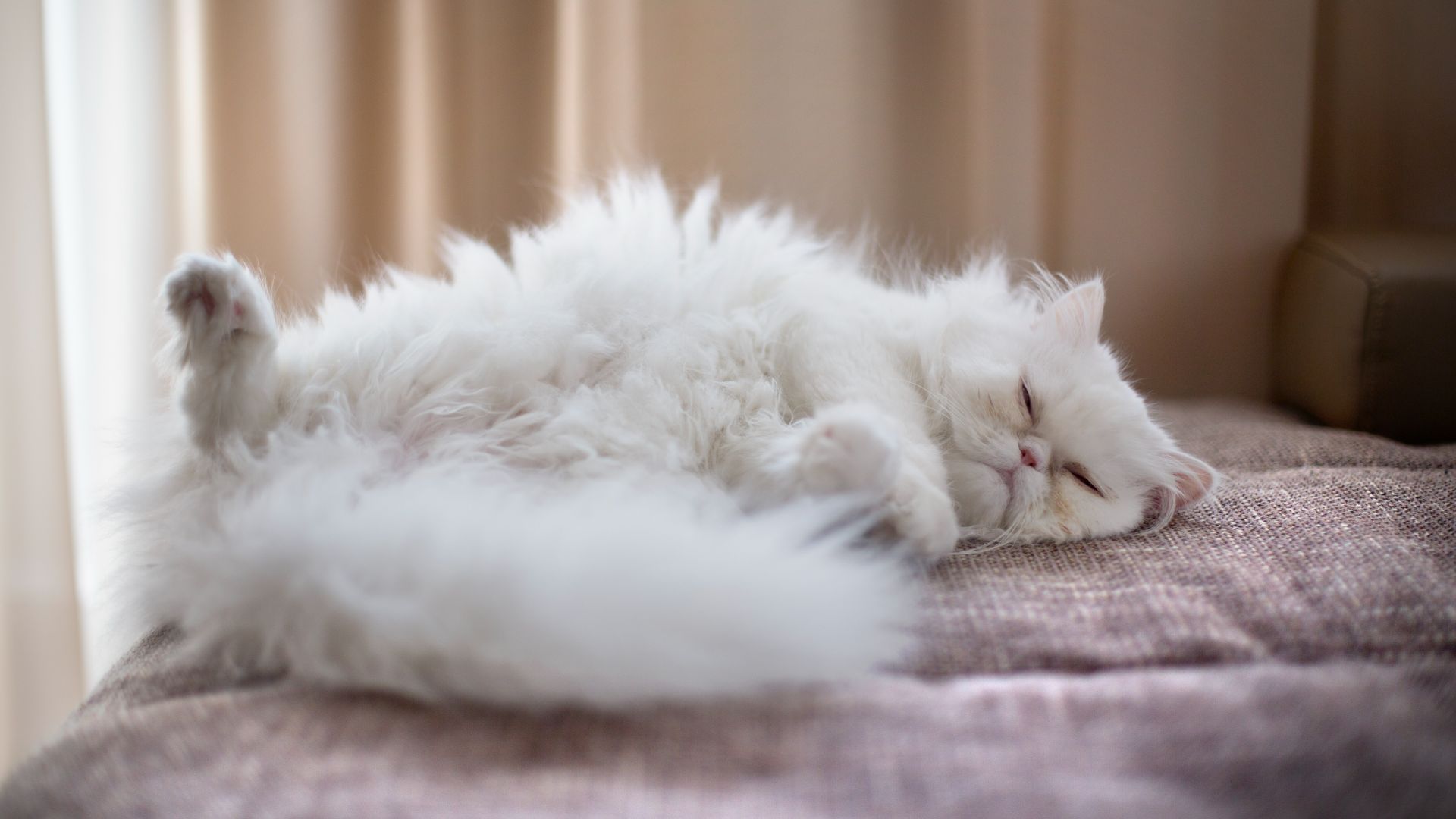
Characterized by their sweet round face and stocky build, Persian cats are adorable balls of fluff. It’s said that the Persian is one of the world’s oldest breeds, with supposed references to the breed in 17th-century hieroglyphics! Persians are docile, have quiet and sweet temperaments, and are low energy, loving nothing more than a nap in the sun. They’re very much an indoor kitty.
One of the Persian’s most beautiful facets is their long, lavish coat with a soft, dense undercoat. Irresistible to touch and admire, this stunning coat requires daily grooming. With their short snouts, Persians are known to struggle with keeping clean, so pay close attention to their eyes, noses, ears, and all the hard-to-reach areas.
The Persian flat face places them in the brachycephalic category, which means their breathing is obstructed and can lead to respiratory problems. They are prone to other health concerns too, such as eye ulcers, skin irritation from skin folds, and kidney and heart issues.
2. Norwegian Forest
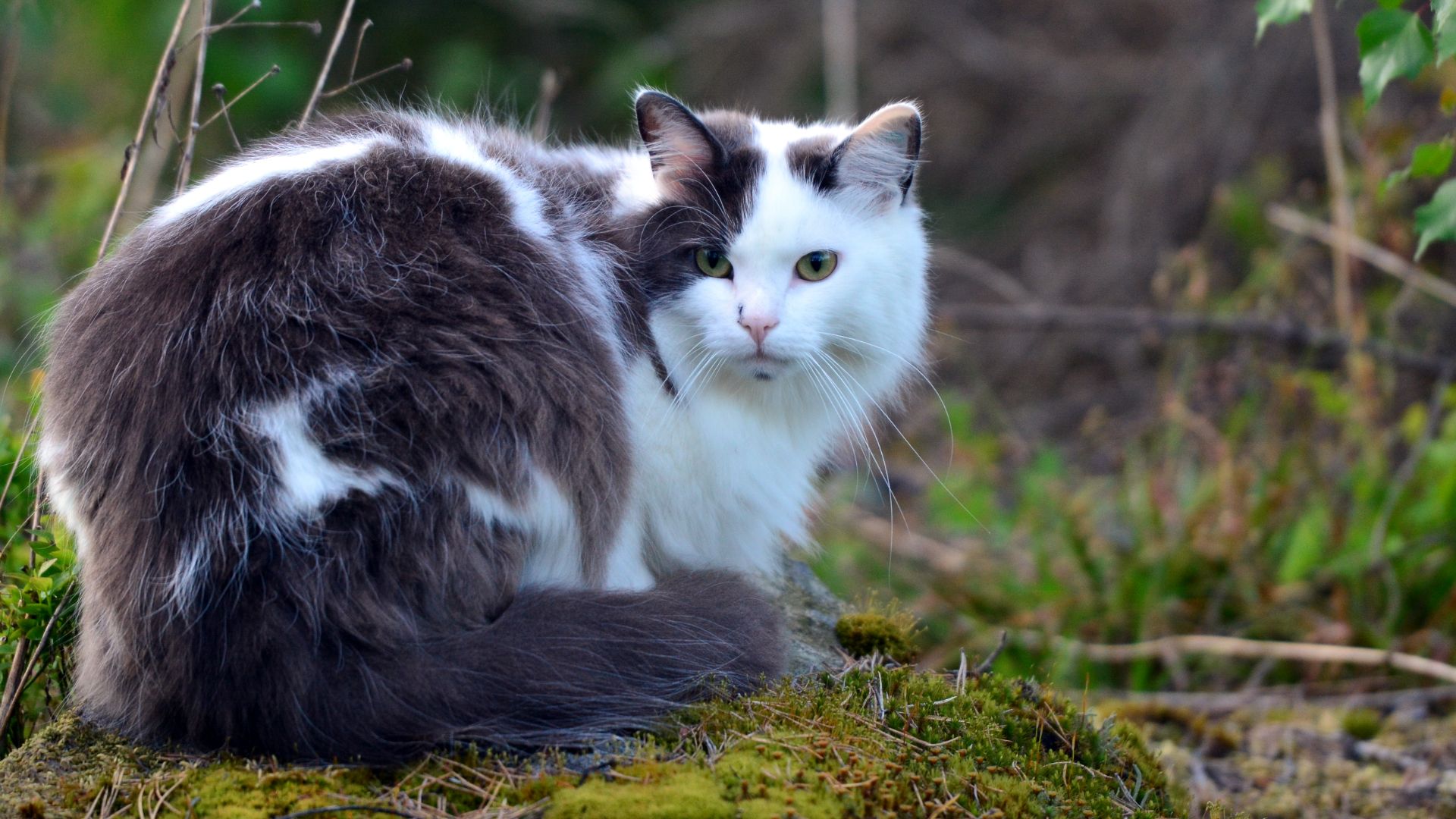
This Scandinavian breed is the stuff of Viking myth and legend and even appears in stories from that period. They have a rugged appearance with an elegant face with bright eyes. They are robust and muscular and are selective about their company – they can be a little shy, so might not be for you if you have a big and boisterous family.
The Norwegian Forest cat has an impressive stature – they are larger than the average cat and sport a coat suited to a cold climate. Their fur is thick and shaggy in the winter and sheds down in spring to a lighter summer version. Despite this, adult cats do well with weekly grooming, with more sessions required during shedding season.
Norwegian forests are generally a healthy breed. Their overarching requirement, though, is play and exercise. They are big-time outdoor cats, who love to climb and explore, so would benefit from one of the best outdoor cat enclosures to play in. They love games and cat puzzle feeders to keep them mentally and physically occupied, too.
3. Maine Coon
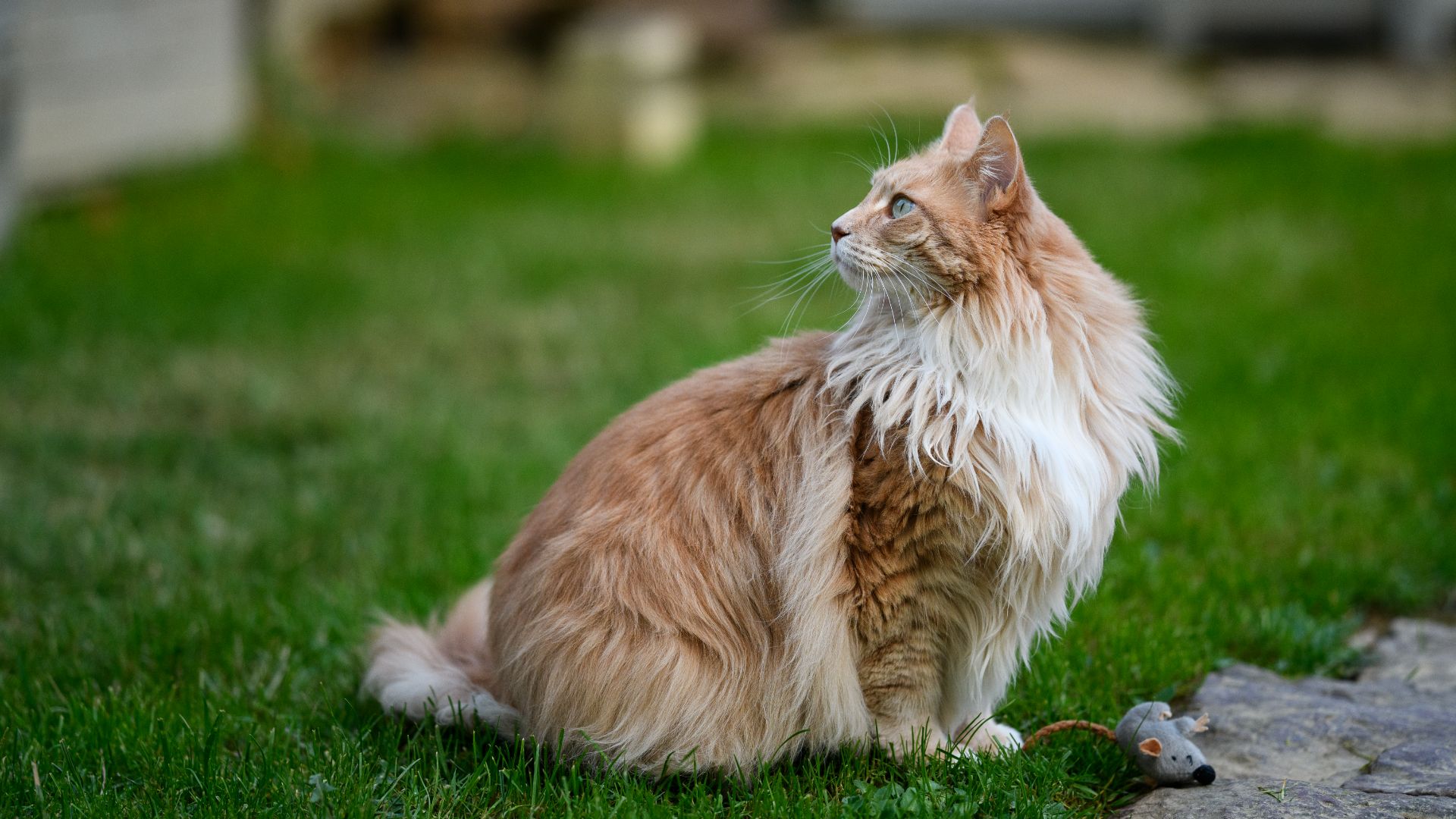
These larger-than-life, adventurous kitties were originally put to work as ship’s cats, and their athleticism and high prey drive made them great on-board pest control. Maine coons are among the largest cat breeds, so if you’re looking to share a smaller home or apartment with a cat a Maine Coon wouldn’t be preferable.
Maine coon coats comprise a short underlayer and a longer, thick, and waterproof top coat that requires frequent grooming. A generally healthy breed, their biggest demands are attention (they crave their owner’s company!) and exercise. Maine coons thrive as outdoor cats and love to roam, climb and play – you might want to kit a Maine Coon out with one of the best pet trackers to keep tabs on them. They benefit hugely from games to help satisfy their instinct to hunt, too.
4. Sphynx
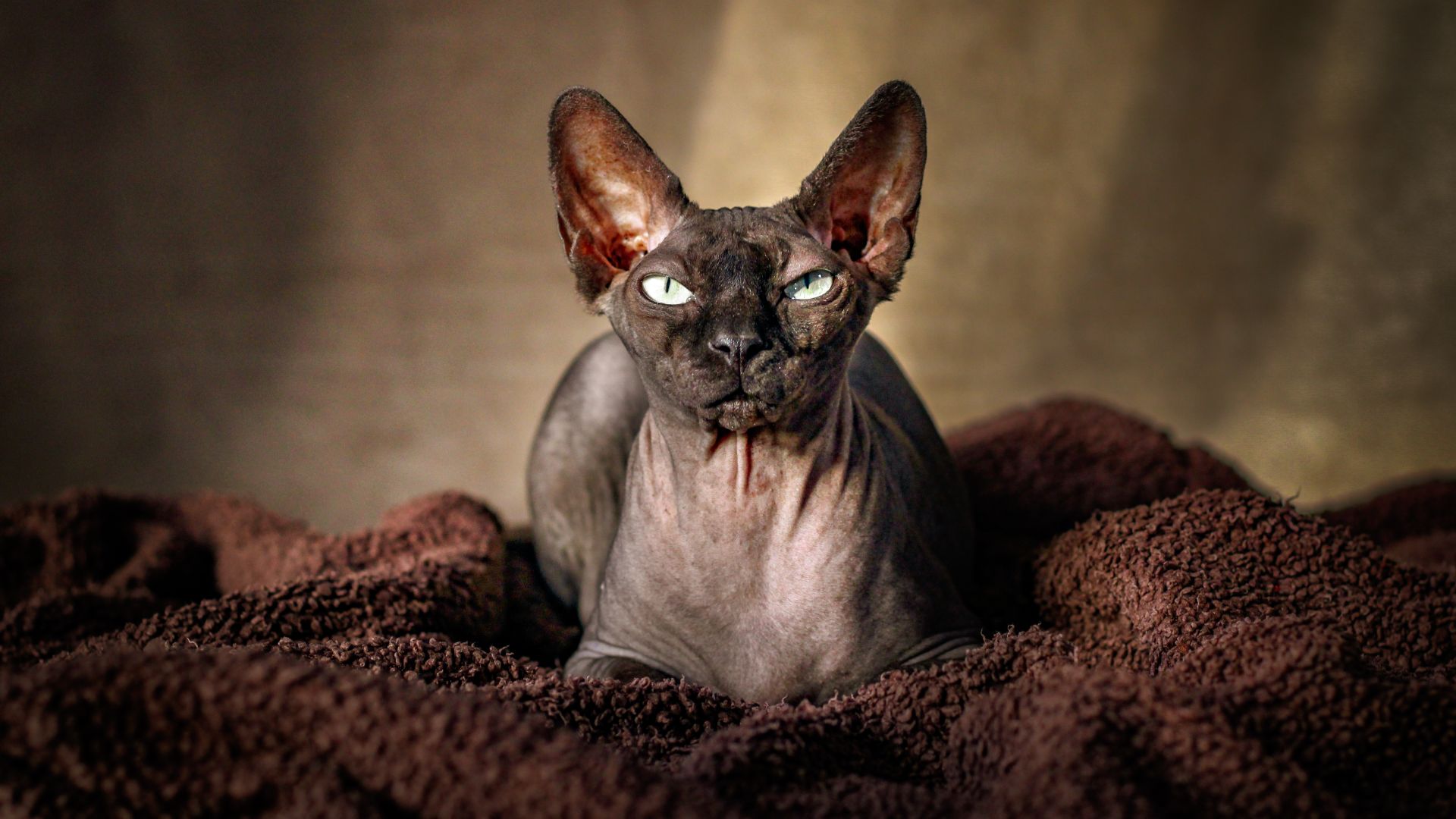
Though there are instances of hairless cats dating back to the Aztecs, this particular breed is a relatively recent phenomenon. Distinctive for their barely-there coats, the sphynx cat came about in the 1960s in Canada, when a female cat produced a litter of kittens with only the finest layer of peach fuzz for a coat. They have a wedge-shaped head and a muscular body, albeit wrinkly in places.
Sphynxes thrive indoors, and exposure to the sun should be monitored closely due to the risk of sunburn. Without a coat to groom, these kitties require regular bathing to keep the skin healthy. Sphynxes are extroverted and intelligent, and they love attention. They can happily be left alone for a few hours, but won’t enjoy you being out all day. They won’t want to be left out of your day-to-day activities, and this includes snuggling with you under a duvet – unsurprisingly, they tend to feel the cold. You may even need to keep the heating cranked for more of the year than usual.
For their high energy and inquisitive nature, sphynx cats require a lot of attention and supervision from their owners. Offer them plenty of toys and one of the best cat trees to climb. Keep an eye out for your sphynx scrambling up curtains and knocking things off surfaces, too!
5. Bengal
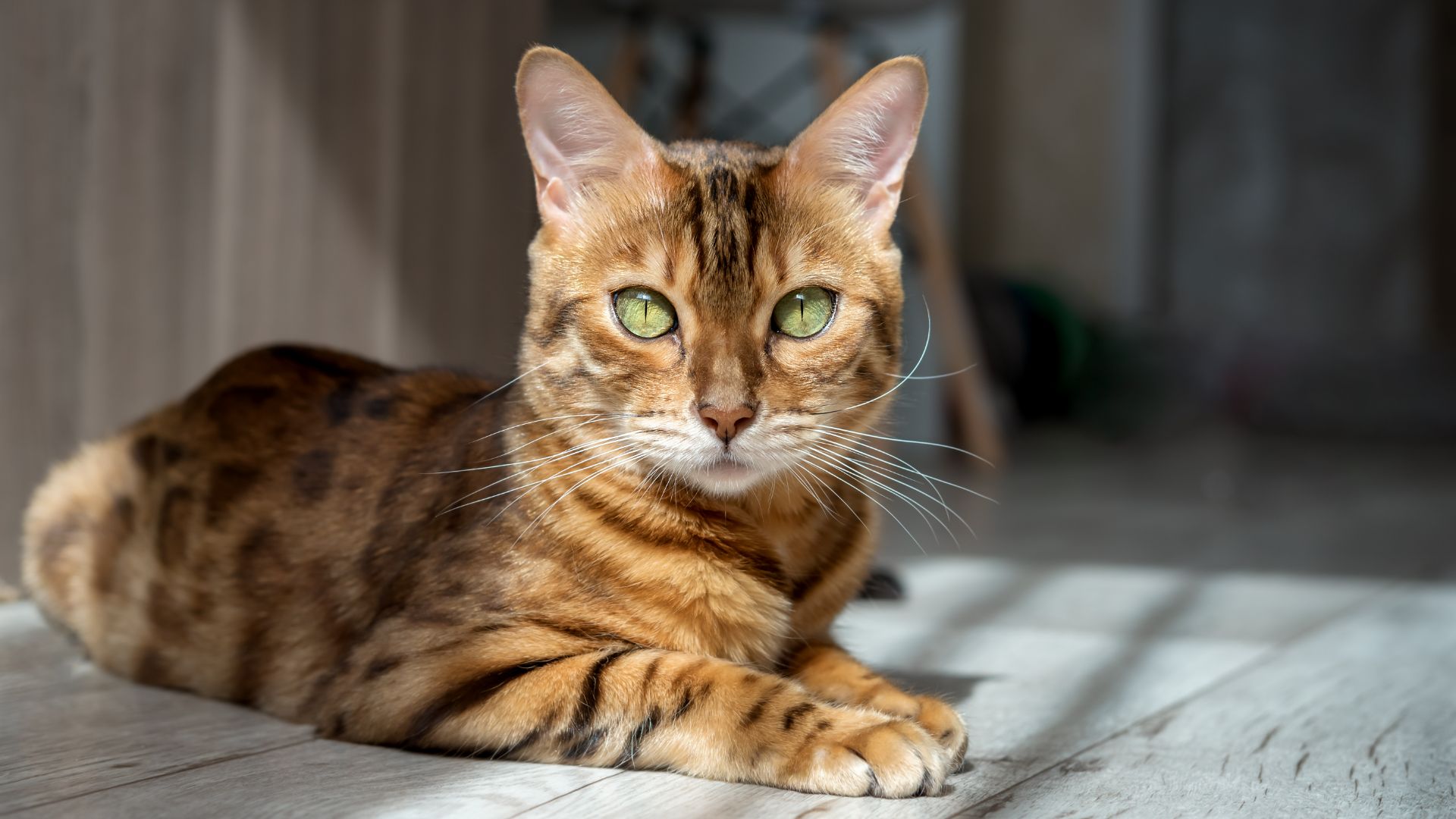
This leopard-like cat is a modern innovation, produced in the US by crossing an Asian leopard cat, a wild breed, with a domestic variety such as a tabby. The result is a visually stunning, medium-sized cat with a slight, athletic build, and a luxuriously patterned coat.
Bengals are extroverted and curious and some say they are dog-like in nature. They are easily entertained and find amusement in almost everything. This sounds endearing, but they require a great deal of input from their owners to sustain their interest and help them regulate their high predatory instinct. In an ideal world, they would be an outdoor cat, but Bengals are highly territorial and won’t welcome strange animals into their zone. With speed, agility, and strength on their side, most creatures won’t want to be on the receiving end of their wrath! A secure cat enclosure with enriching toys would be the perfect playground for a Bengal.
Exuberant personality aside, Bengals are generally healthy and require only weekly grooming.
6. Scottish Fold
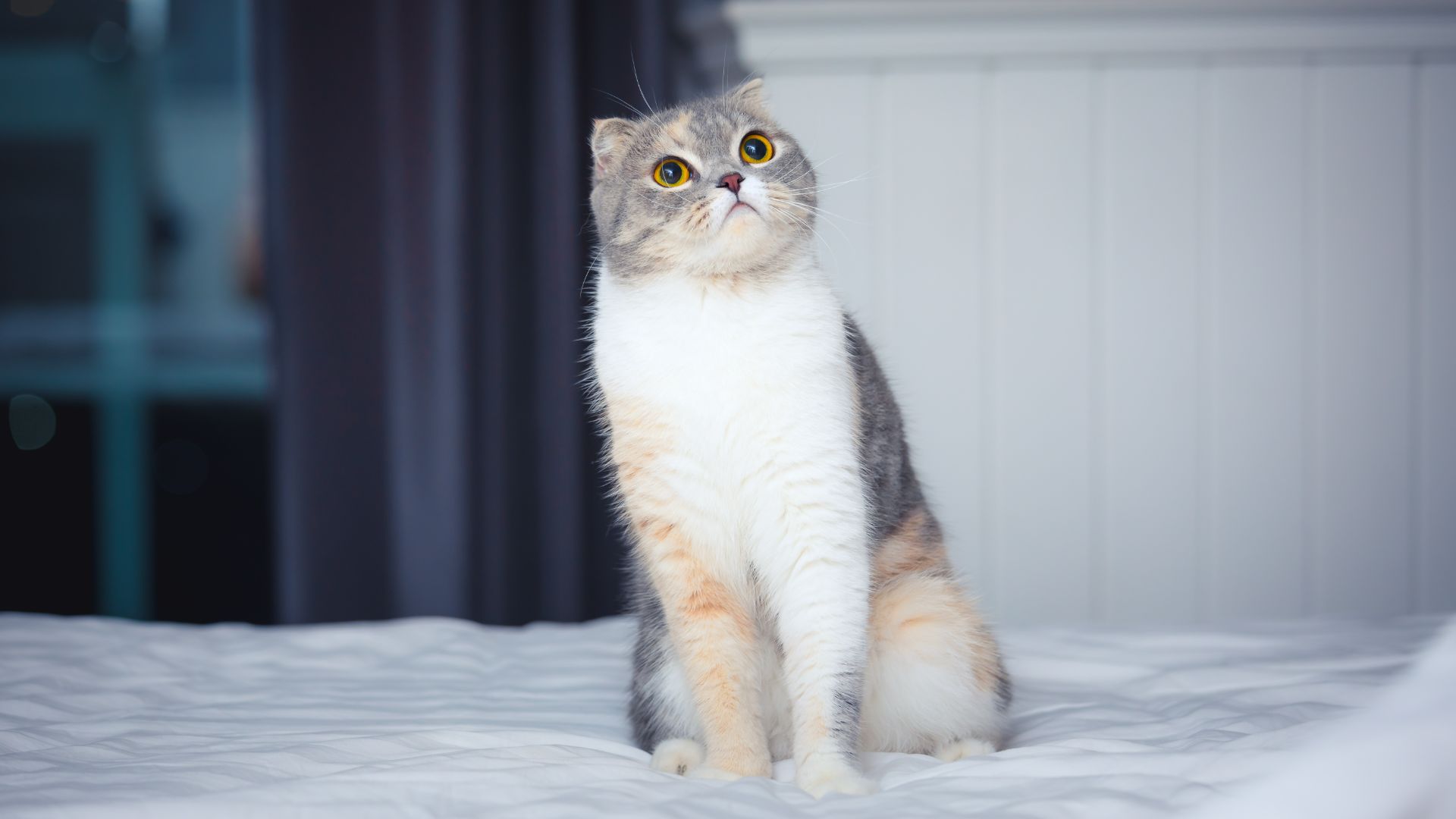
Unique for the folded ears from which they get their name, the Scottish Fold is the product of mutation first noted in 1960s Scotland. Recently, the Scottish Fold has been popularised by Taylor Swift – the singer has two of her own.
While adorable in appearance, some argue the squashed ears of the Scottish Fold are problematic as they may prevent the cats from cleaning themselves effectively. Unfortunately, the Scottish Fold is also prone to a number of health issues. As well as being a brachycephalic breed, the genetic defect that causes the ears to fold affects the cartilage and the joints throughout the kitty’s body. As such, Scottish Folds are at high risk of extreme arthritis, which must be carefully managed to reduce pain or discomfort.
Personality-wise, Scottish Folds are quiet, sweet cats who are comfortable in most home environments. They enjoy short bursts of play that simulate hunting.
7. Cornish Rex
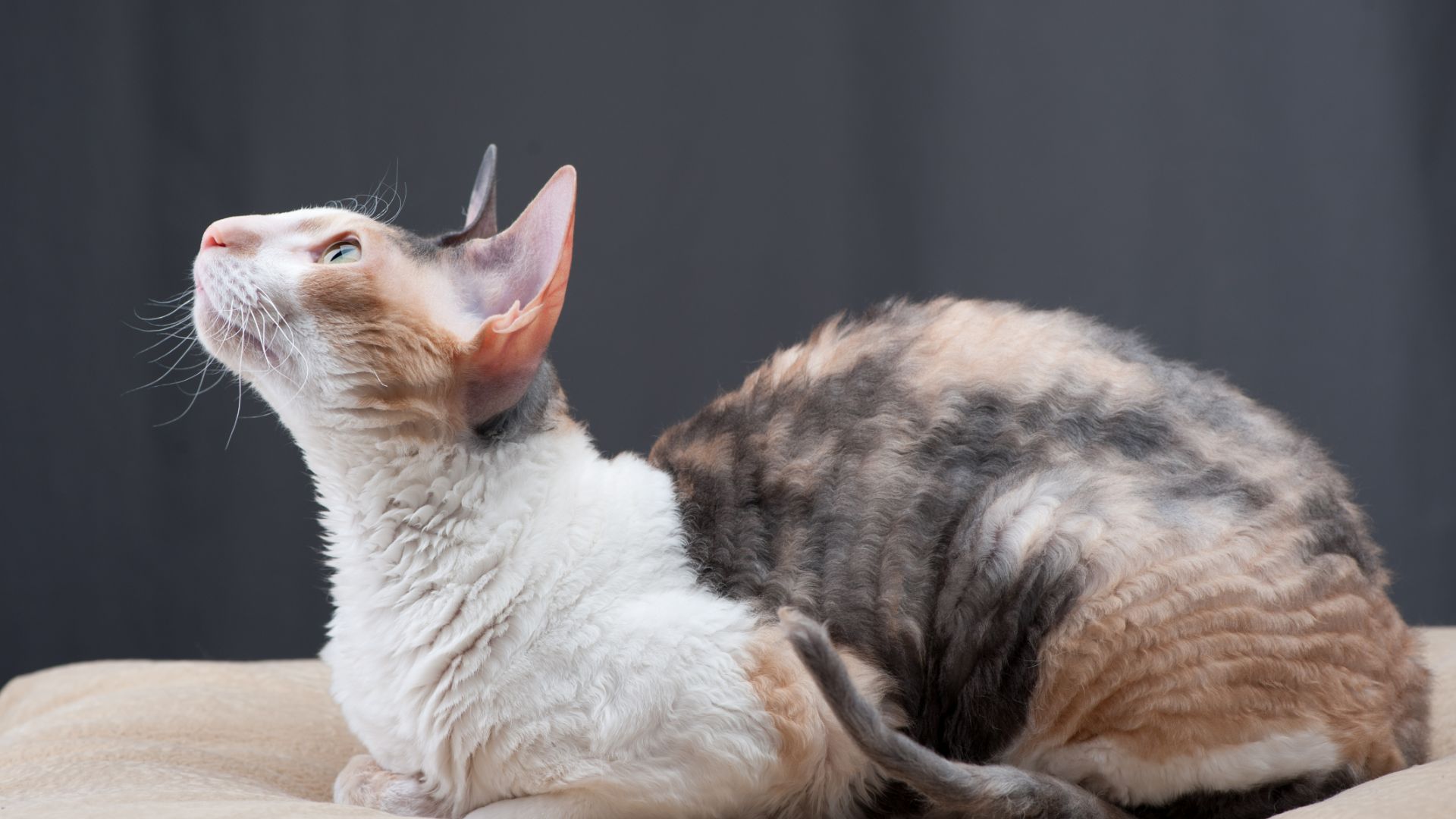
Have you ever seen a cat with a curly coat? Cornish Rexes are just that! The breed arose in the 1950s when a kitten in a litter born in Cornwall, UK, had wavy fur caused by a genetic mutation.
These kitties are playful and retain a kitten-like demeanor into old age. Their ears are large and mobile, well set on their wedge-shaped heads. They are lean, athletic, and highly sociable. Their intelligence and high energy mean they need a lot of play and games to keep them stimulated. They don’t mind being left for a couple of hours, but won’t do well with long and frequent periods.
While a cornish rex does not benefit from regular brushing (their curly coats are easily damaged), cats with pale coats may require kitty-safe sunblock. The breed can be prone to hypotrichosis, a condition that means fur does not grow in some areas, and these areas need to be monitored for skin infections.
8. Devon Rex
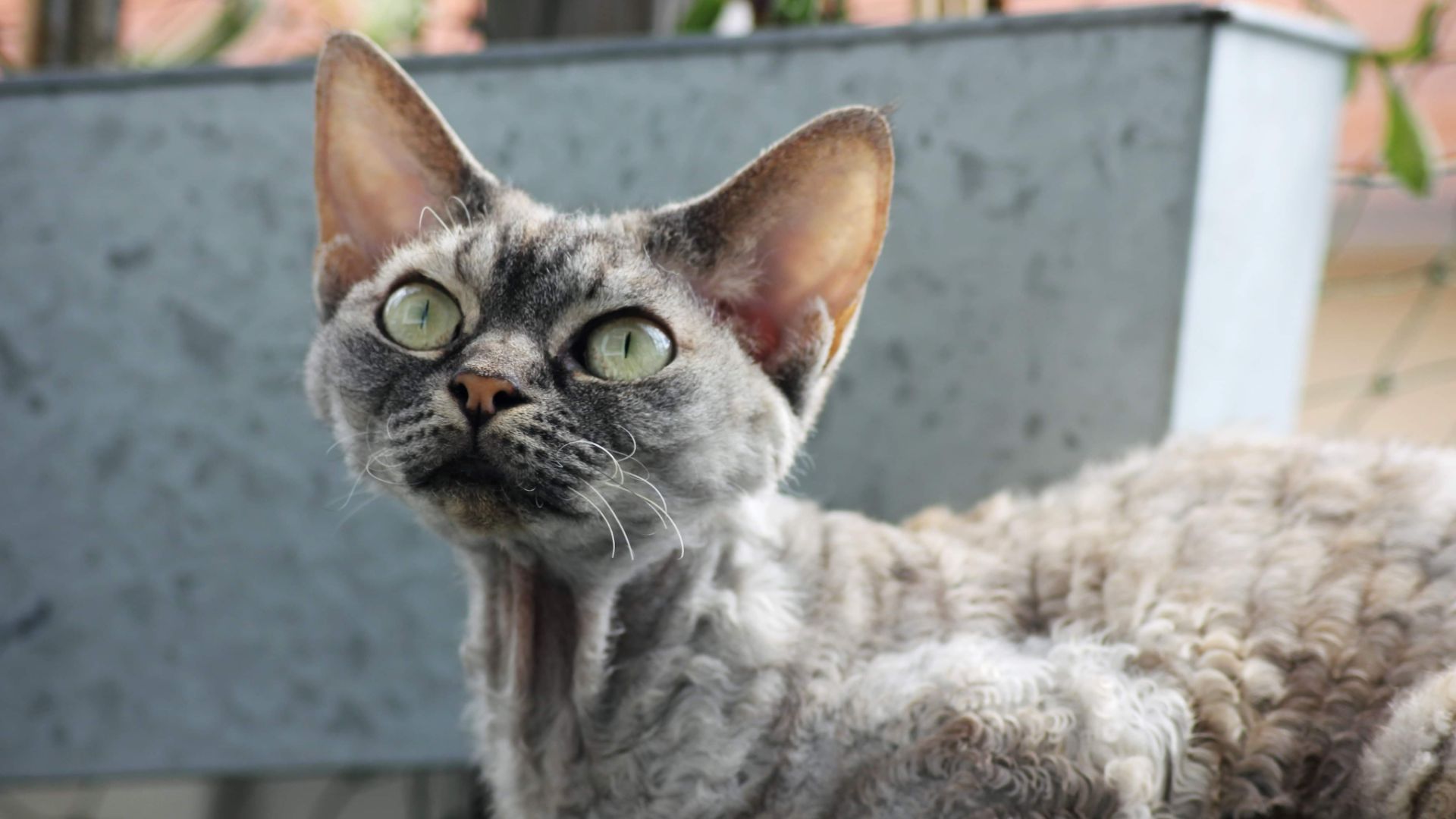
All Devon Rexes can trace their lineage back to one ancestor, Kirlee, who was born to a litter in Devon, UK. Thanks to a genetic mutation, the kitten was born with a curly coat – hence Kirlee’s name. It was found that the mutation that gave Kirlee their coat differed from the defect of the cornish rex, and so the breed has been separately preserved.
Pixie-like in appearance, the Devon Rex is a medium-sized cat with a wedge-shaped head, giant ears, and large, mesmerizing eyes. Their curls extend to the whiskers, which makes them fragile and prone to breaking. The Devon Rex’s curly coat requires only minimal grooming, but they do need their ears cleaned regularly to prevent the build-up of debris and infection.
These cats need a huge level of input from their owners to curtail destructive behavior. Devon rexes have energetic, cheeky, and mischievous natures and their intelligence means they can be trained to respond to commands, which is great mental stimulation for them. Their love for climbing means they’ll find ways to do it whether you provide cat-appropriate systems or not – so if you can’t stand clutter and want to keep your furniture intact, a Devon Rex might not be your dream kitty!
9. Siamese
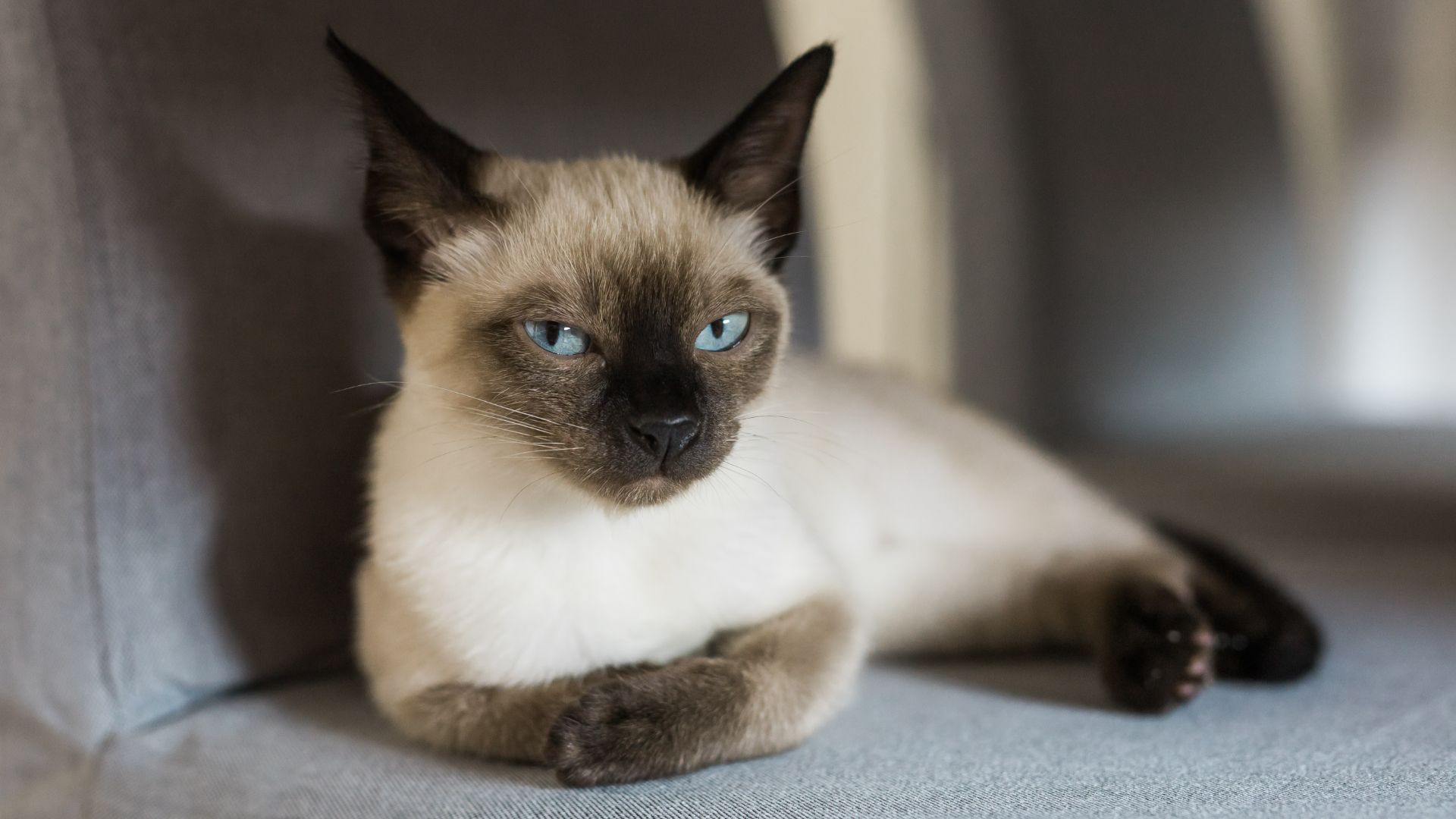
This Asian cat has origins in Thailand, then called Siam, and can be identified from the 19th century onwards. This distinctive cat is super-popular and recognizable, with a caramel-colored body and darker hue around the face, ears, legs, and tail. Their almond-shaped eyes are utterly heart-melting.
Overall, siamese cats are robust and healthy, but can be prone to developing feline asthma or inheriting genetic diseases such as retinal atrophy – it’s always wise to ask the breeder if the parents have been tested.
The first thing you notice about a Siamese is that they have a lot to say! They are among some of the most vocal cat breeds and have a low-pitched and loud meow. They tend to form a strong bond with one family member and are pretty dependent – no such thing as personal space with a Siamese around! As sweet as their loving natures are, they can also be prone to separation anxiety and can benefit from being kept in pairs. You need to be comfortable spending a lot of time hanging out with, and entertaining, a clingy yet very active cat to succeed with a siamese. Be warned, though – this busy kitty might not settle for a duvet day!
10. Munchkin
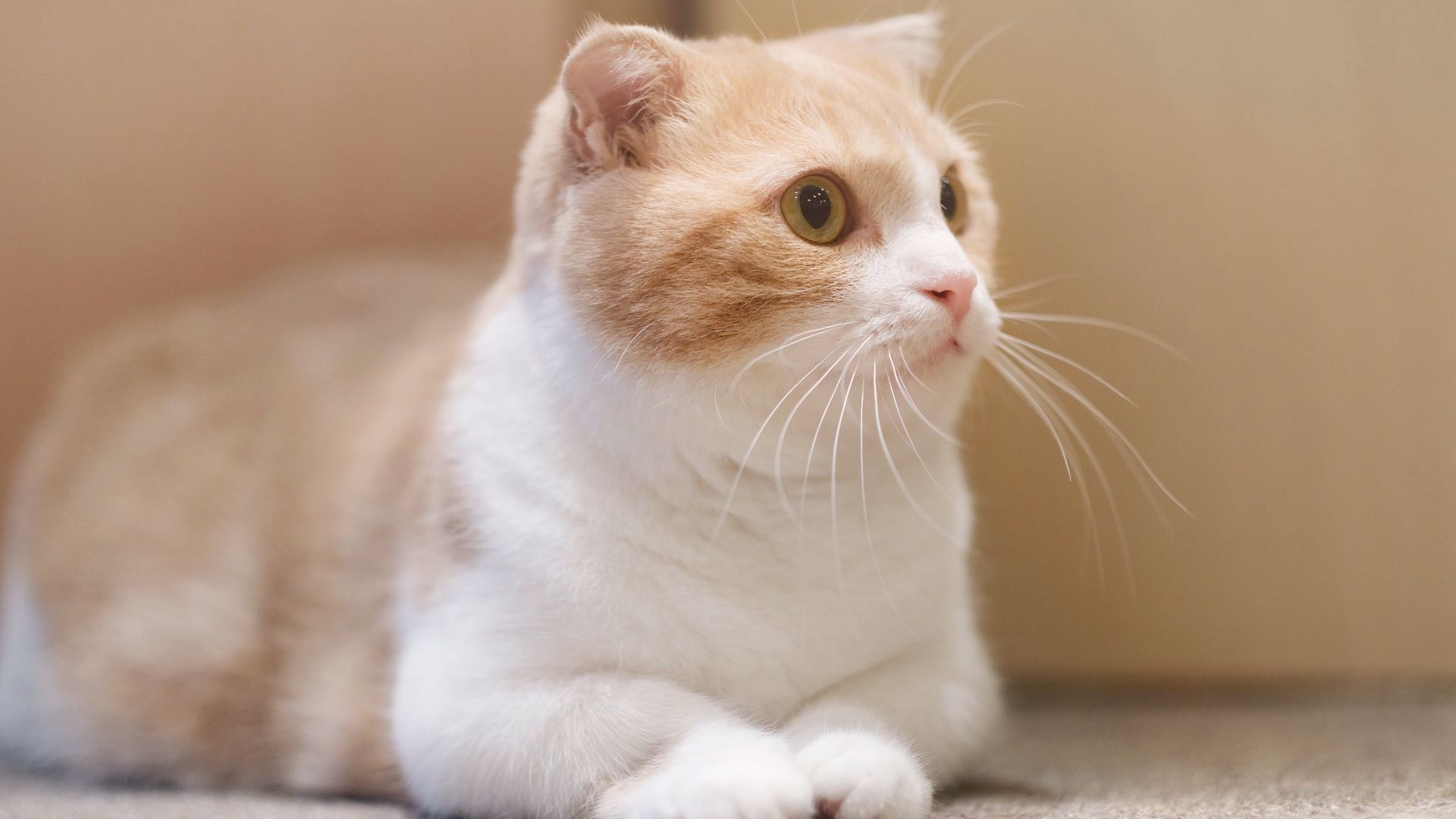
Cat or weasel? Munchkins are adorable small to medium-sized cats known for their extremely short legs, making them look like the dachshunds of the feline world. While they look super cute, they aren’t recognized by many cat associations. Ever since they started being actively bred in the 1980s, some believe the breed is predisposed to health conditions and their short-legged trait shouldn’t be actively sought.
So, what are the said health conditions? Well, the length of their back relative to their legs can be a problem. They move quite differently from standard-legged cats, almost snake-like through their bodies, and they struggle to jump. While they like to play hunting games, it’s advisable to discourage your munchkin from jumping. Their relative length of back means they are at risk of strain and injury and it can predispose them to arthritis.
Additionally, their unusual stature means that some munchkins struggle to reach some parts of their bodies to groom, so need at least a bi-weekly groom to help maintain their coat and skin health. Signs that your kitty isn’t able to groom themself effectively include grease in the coat – longer-haired munchkins may need daily grooming.
11. Ragdoll
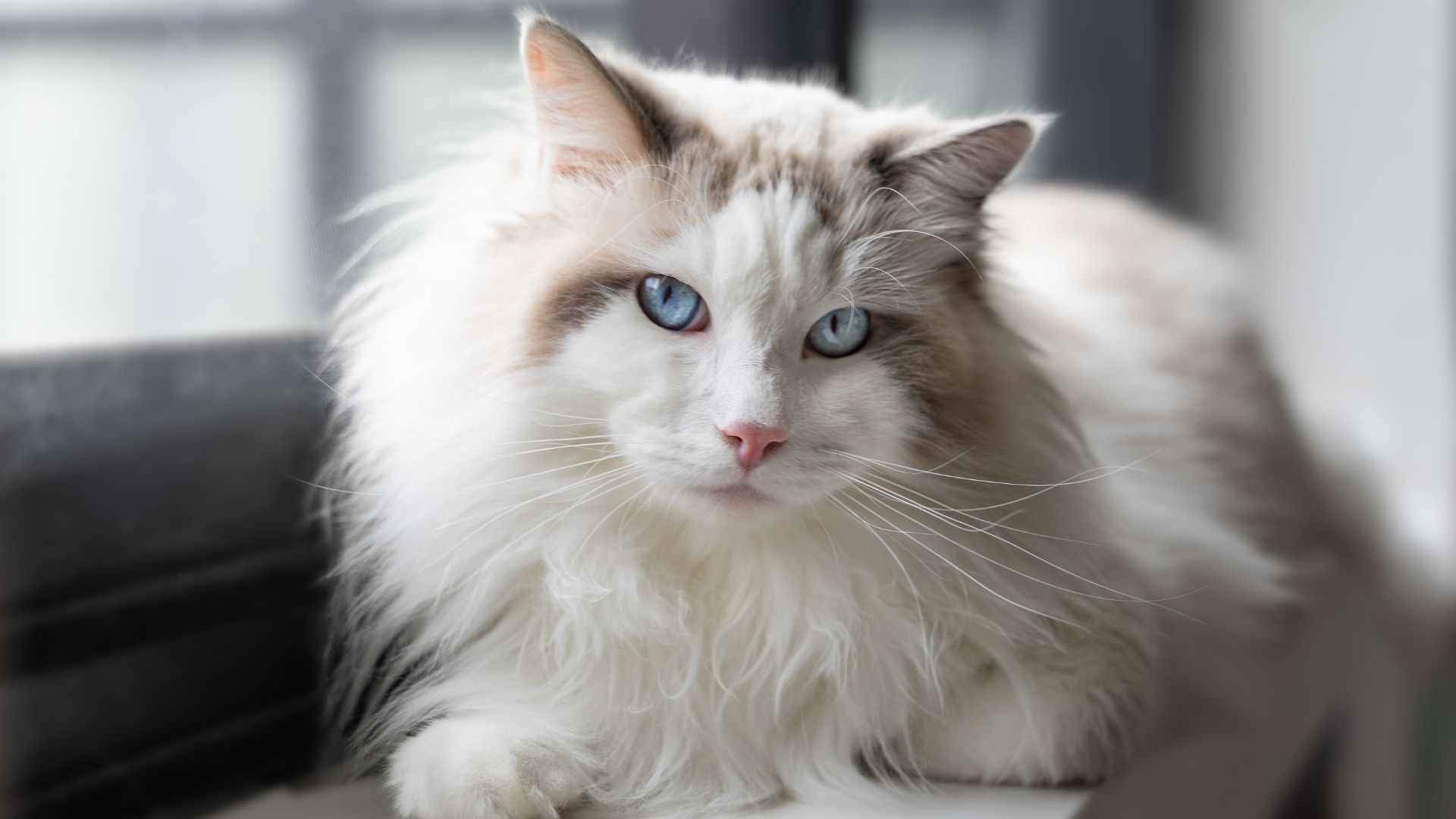
These large, expressive, and fluffy felines came about in the US in the 1960s, when Turkish Angora cats were crossed. Ragdolls are super laid-back in nature and large and muscular in stature – although their robust frames are all but hidden by their magnificent and opulent coats, which are dense and silky.
As you might imagine, the qualities of the coat mean that ragdolls require daily grooming pretty much from day one. Mats form quickly and easily in the coat, and soon become unmanageable if not swiftly dealt with. Bear in mind, too, that the ragdoll is one of the largest cat breeds around, so grooming them will take some time.
Aside from this, ragdolls are docile and friendly – a little too away with the fairies to roam freely outdoors, but would enjoy access to a cat-proof garden. They are so chilled out that they need a bit of encouragement to stay active – games and puzzles will do the trick.
12. Ragamuffin
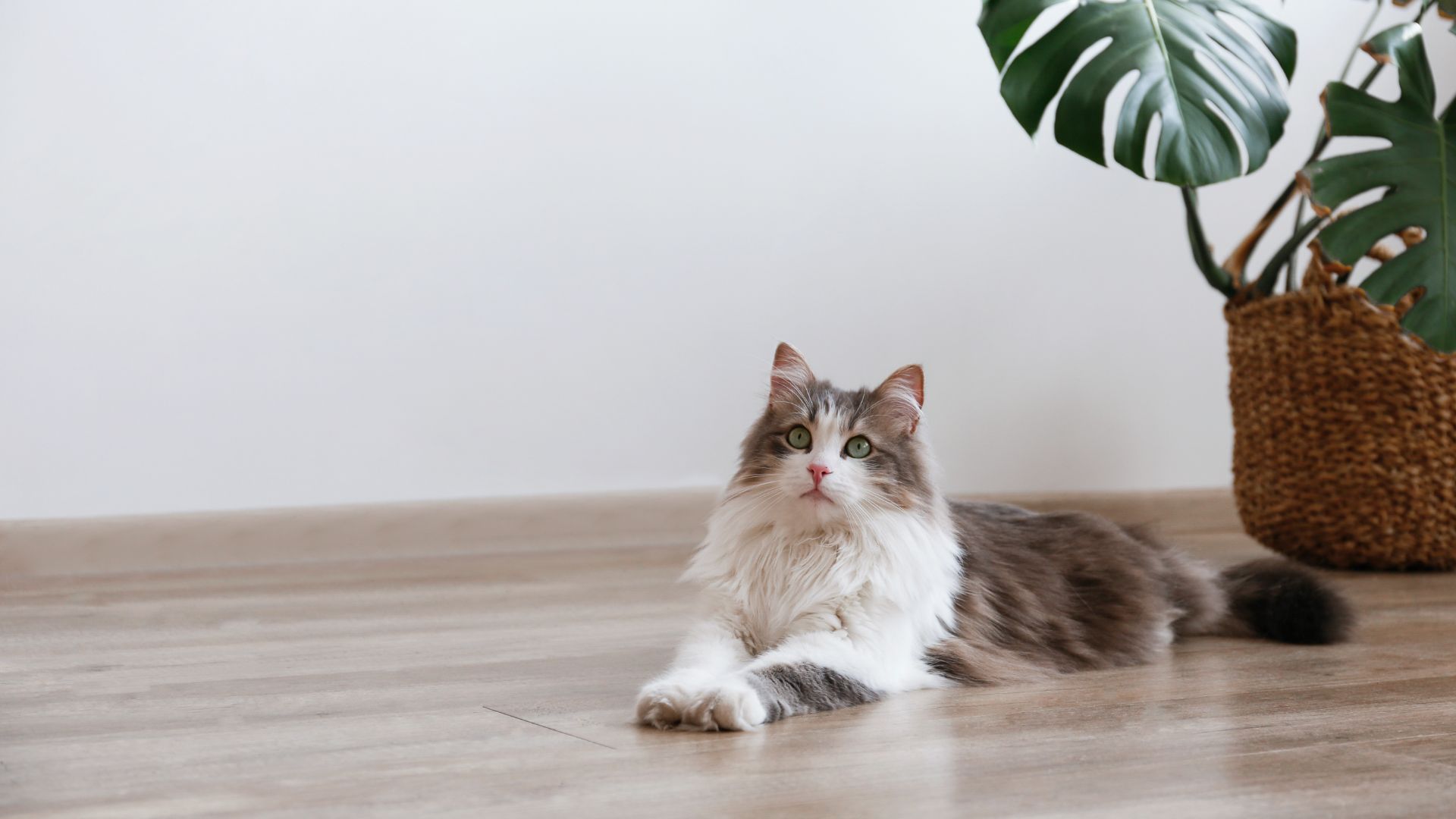
The ragamuffin is closely related to the ragdoll – the latter breed was crossed with other domestic long-haired cats to produce a similarly large cat with a similarly beautiful coat in a wider variety of colors. The coat is characterized by a large ruff and tufts at the ears – even between the toes! Just like ragdolls, daily grooming is essential and they have the same tendency to rest on their laurels, needing encouragement to be active.
13. Balinese
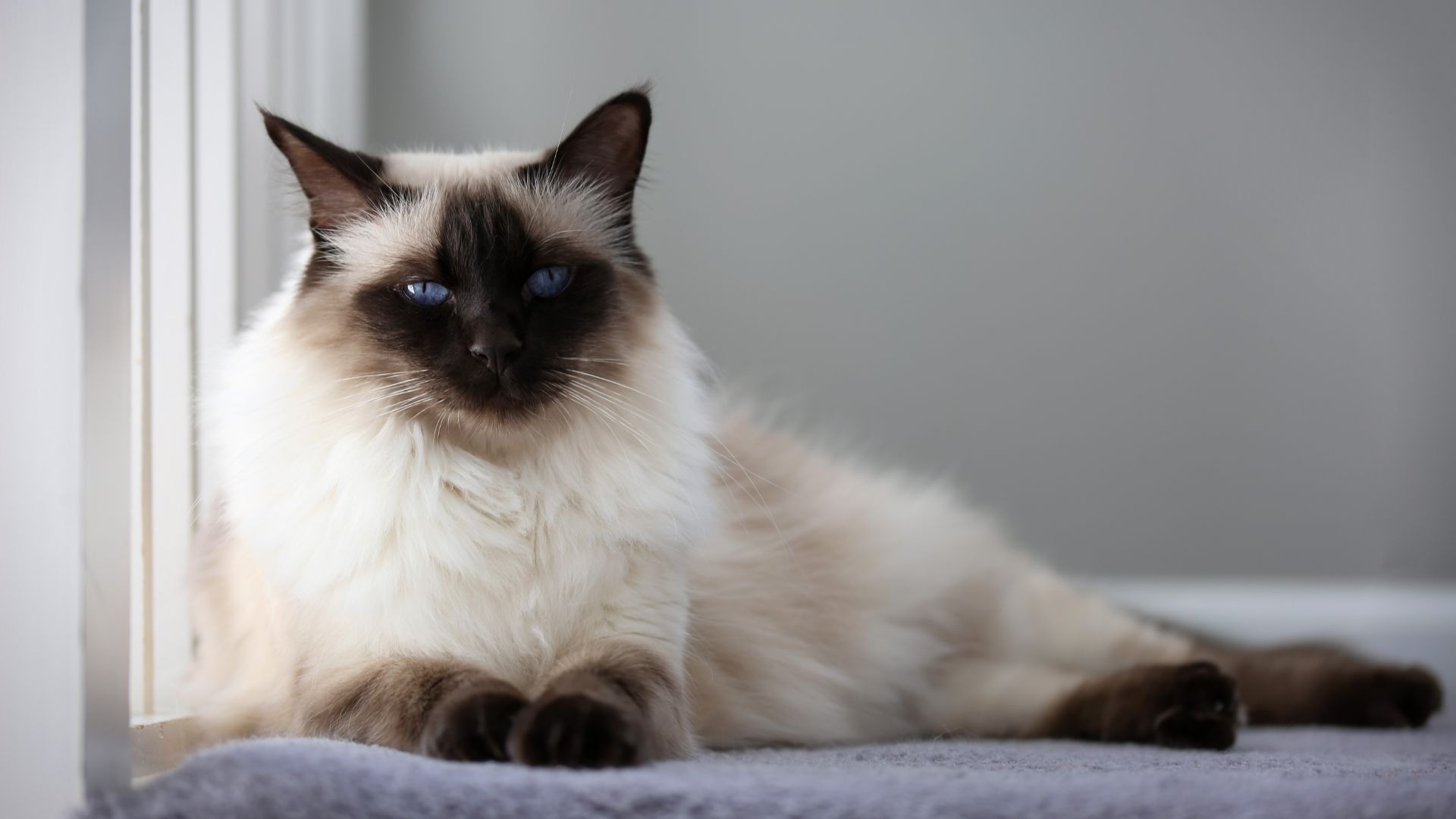
The Balinese were bred offspring of longer-haired Siamese cats, so they look very similar in appearance but are fluffier. Despite the length of their hair, they have no dense undercoat and are therefore at much lower risk of matting than other fluffy cats. As such, a weekly grooming session is usually fine.
Like the Siamese, the Balinese is a noisy cat who might disturb your neighbors if allowed to wander about. Another similarity is their curiosity and propensity for mischief – you may find a few things are knocked off your shelves if you don’t commit to entertaining your kitty. They’re athletic and high energy, too, so appreciate cat gyms to climb!
14. Singapura
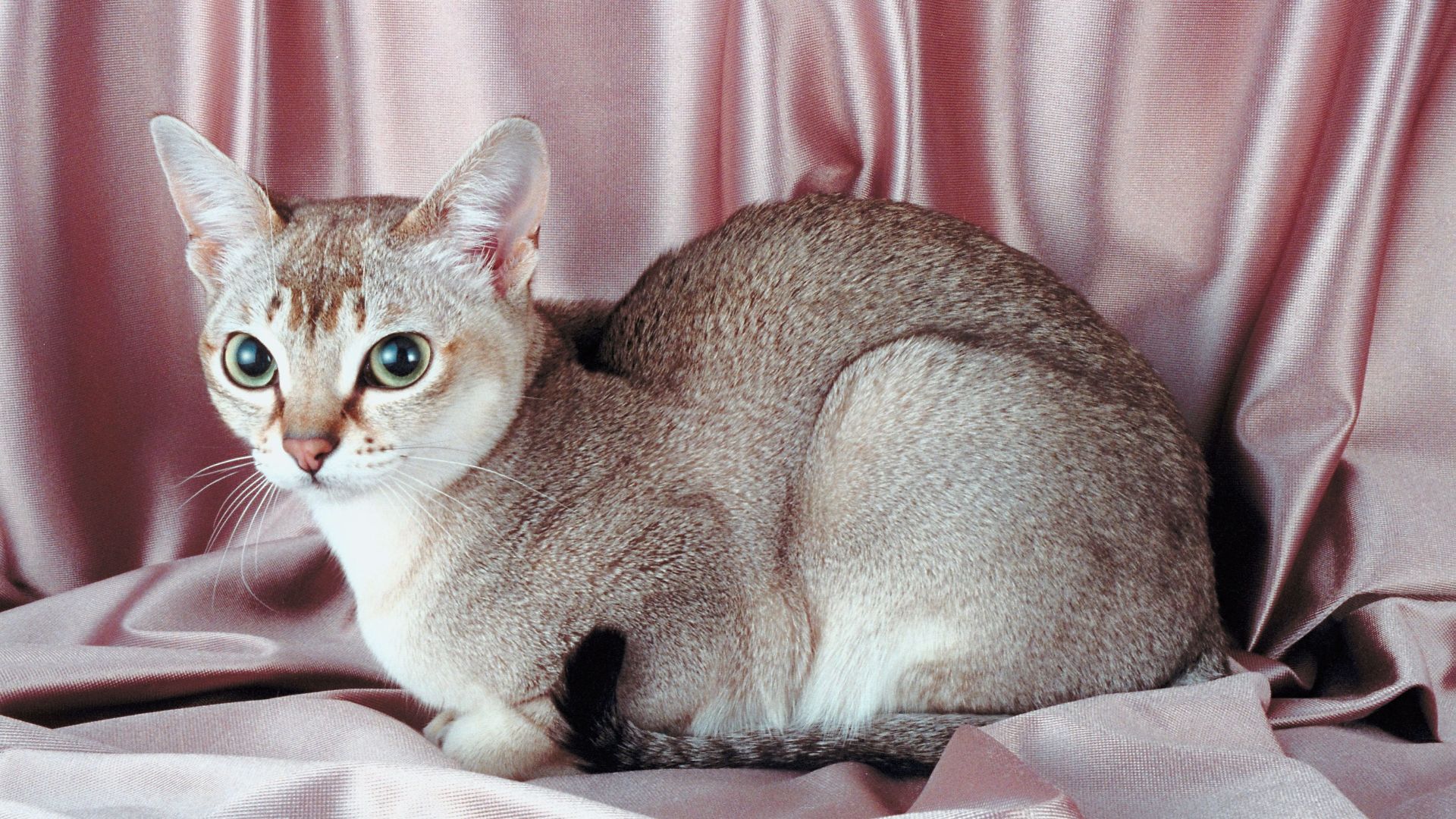
This svelte little cat is athletically built with a short, neat coat and almond eyes that look as if adorned with black eyeliner. They are descended from feral cats and those employed as ship’s cats arriving in Singapore.
The singapura is cheerful and friendly with curious and extroverted tendencies. Like other Asian breeds, their inquisitive nature can be perilous to any ornaments or decorations you have in your home! They love to be involved in whatever you’re doing, so you might not get much privacy, and their high activity level can turn destructive if your singapura is insufficiently stimulated.
15. Selkirk rex
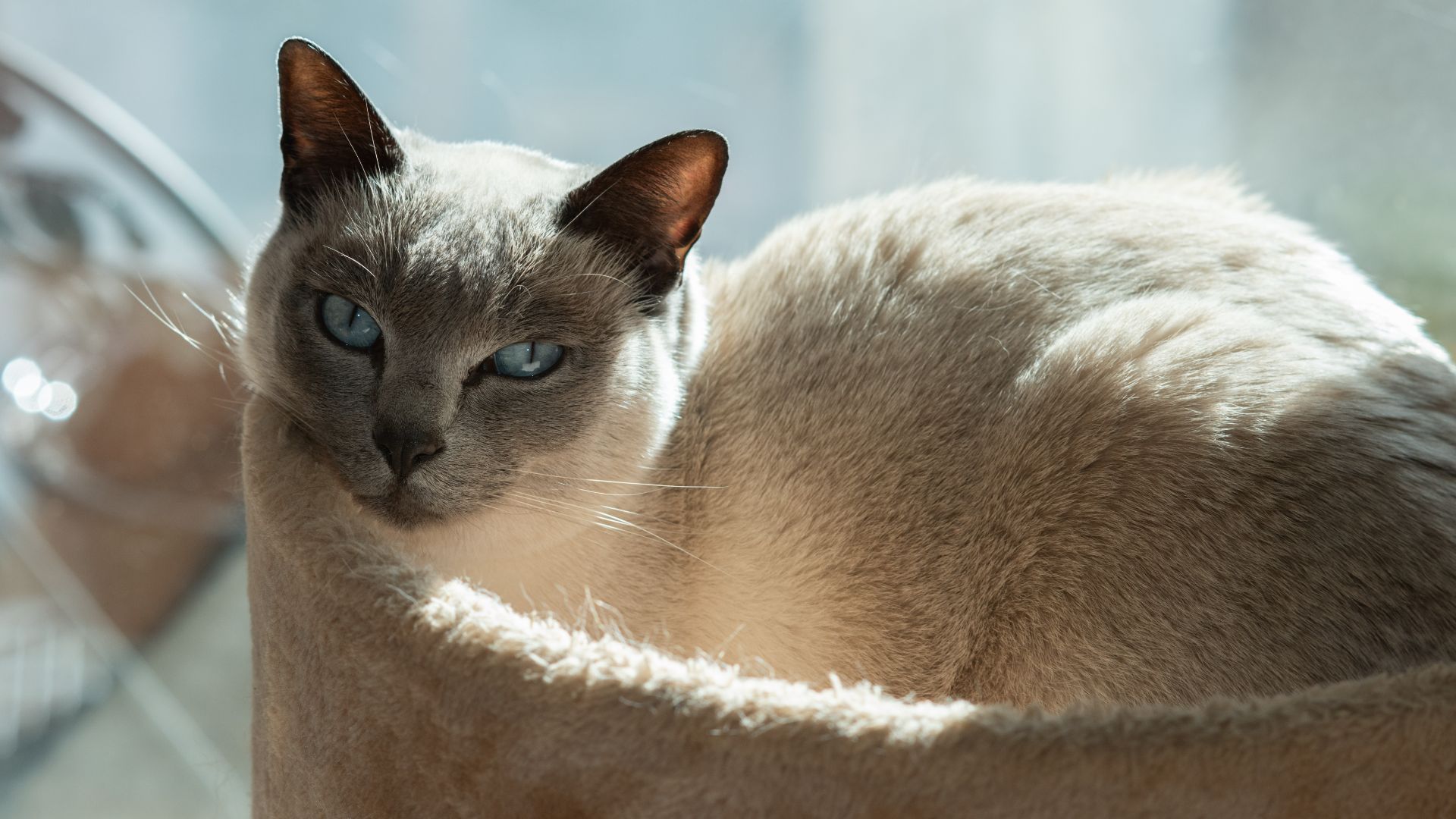
The selkirk rex is another curly-coated kitty and is named after the selkirk mountain range in the US. The breed originates from a wavy-haired kitten birthed by a tortoiseshell feral cat who carried a mutated gene. However, this mutation was different from the one that formed cornish and devon rexes.
The selkirk rex is a medium to large cat with a robust frame, a short snout and legs, and very appealing eyes. They look very plushy and are silky and soft to the touch. While the other rex breeds require minimal brushing, the selkirk’s longer, more lavish coat requires daily attention – it’s so fluffy and wavy that selkirks can’t effectively groom themselves.
Personality-wise, selkirks are affectionate and playful and, while they thoroughly enjoy company, they don’t mind being left for long periods. More of an indoor cat, their bright natures make them suited to interactive puzzle games.
16. Tonkinese
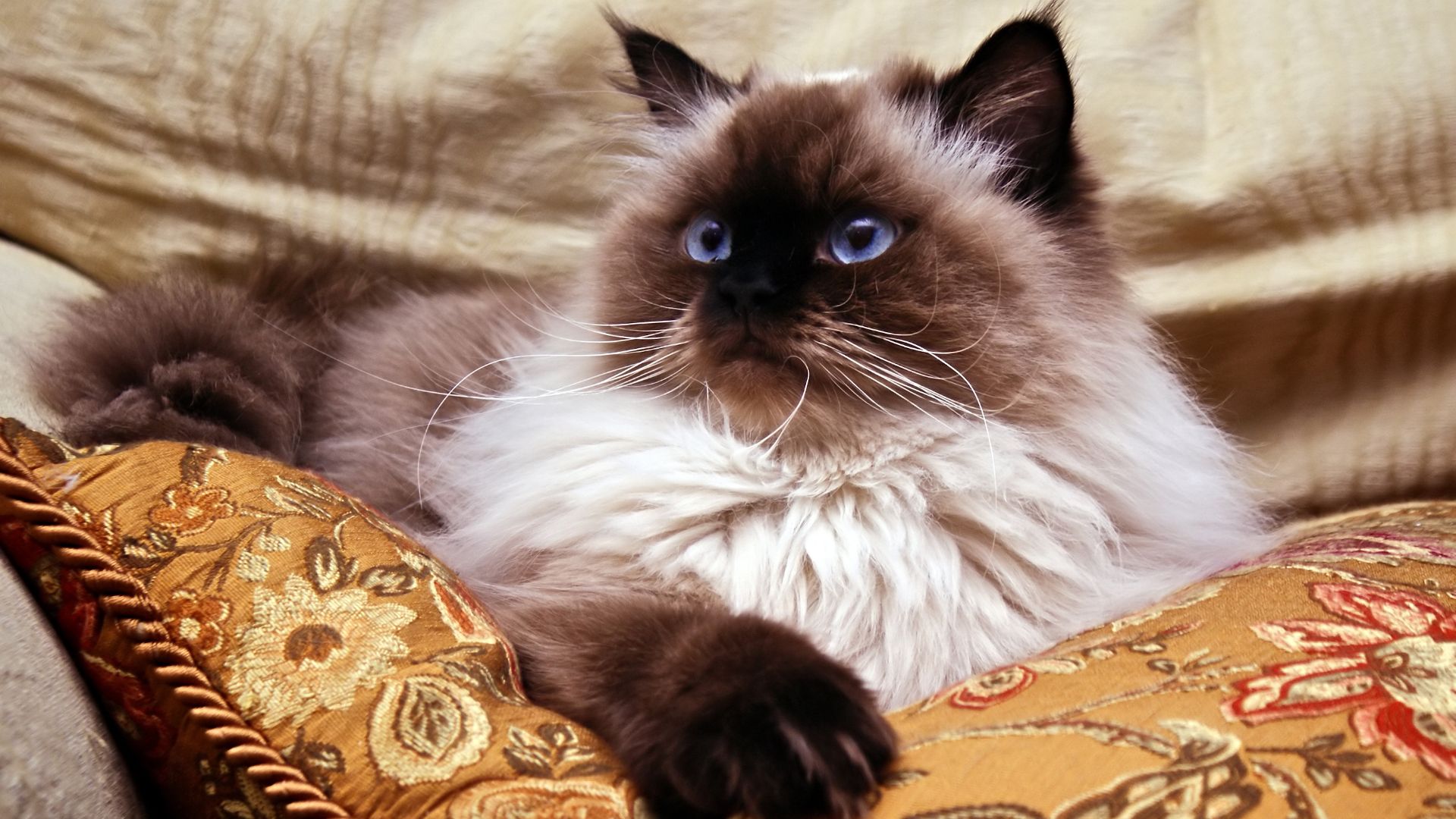
Another Asian type, the Tonkinese has a sweet round head and similar markings to the Siamese, though usually darker in hue and a little less slender. Nonetheless, they are an elegant and appealing cats, with nice round eyes and a short, neat coat.
The tonkinese isn’t as high-drama or incorrigible as the Siamese, but they still have a propensity for mischief and a lot of energy to burn. They are also a pretty vocal cat and will chatter away to you. While their grooming requirements are relatively low – once a week should do the trick – the tonkinese requires a great deal of input activity-wise to stay out of trouble. Ensuring you have a secure garden they can jump and run in will help keep your tonkinese occupied, and they love to play chasing games too.
The breed can be prone to a disorder called Burmese head, which means the face and skull do not form properly.
17. Himalayan
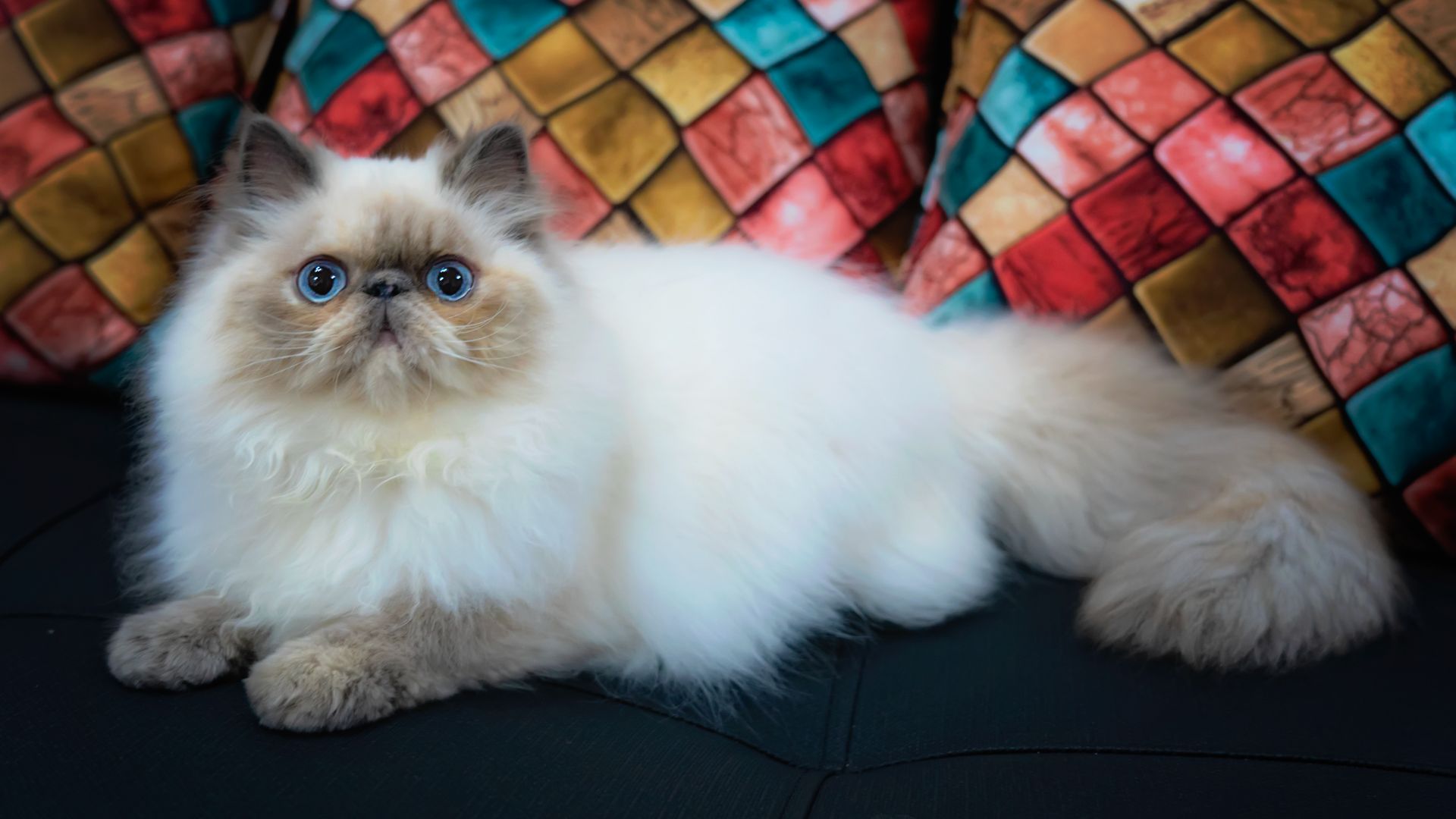
The Himalayan came to be when a breeder crossed a Siamese with a Persian in the 1930s. Himalayans resemble Persian cats in appearance, their robust, muscular build is hidden by a luxurious coat. They have cute, round, and flat faces with small, round ears.
This popular pet requires daily grooming as the short, dense undercoat and long, luscious top coat can easily mat – they’re heavy shedders, too. A brachycephalic breed, Himalayans can be prone to breathing difficulties that need careful management, as well as misaligned teeth and eye conditions.
Himalayan cats make for wonderful family members with their docile, affectionate natures and calm, quiet demeanors. They’re definitely an indoor pet.
18. Egyptian Mau
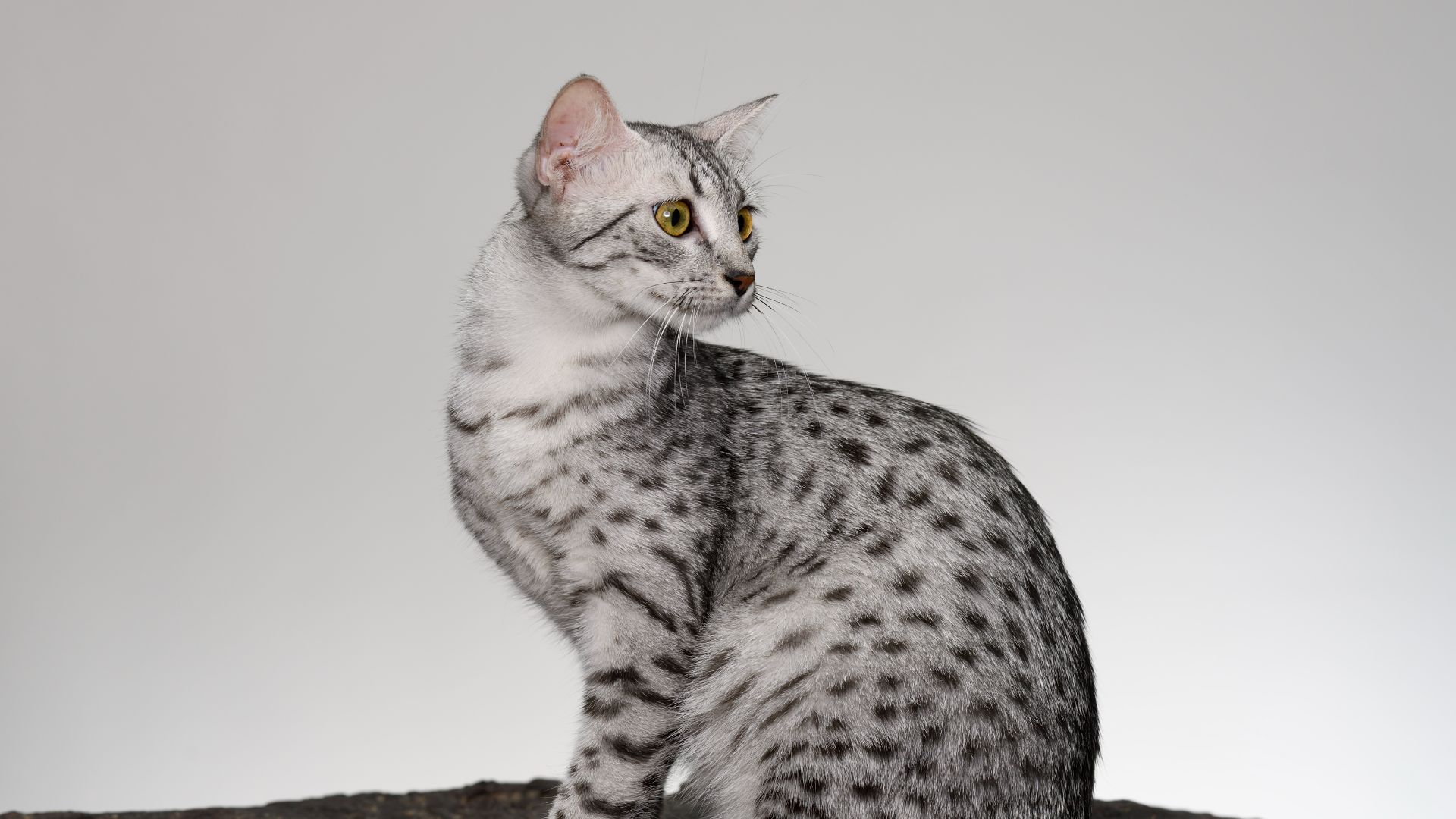
A sensitive and shy breed, the Egyptian Mau's origins can be traced to the feral cats who roamed the streets in cities like Cairo and Alexandria. Lean and regal-looking, Egyptian Maus have a very neat appearance, with demure round paws, stripey coats, and deep, round eyes.
The Egyptian Mau is a high-energy cat that requires plenty of space to play – they’ll definitely appreciate a cat-proof garden to jump, climb and stalk in. Though wary of strangers and not au fait with boisterous kids, these clever cats benefit from lots of interaction with their favorite humans and enjoy playing games. They can even be taught commands and learn to play fetch!
19. Korat
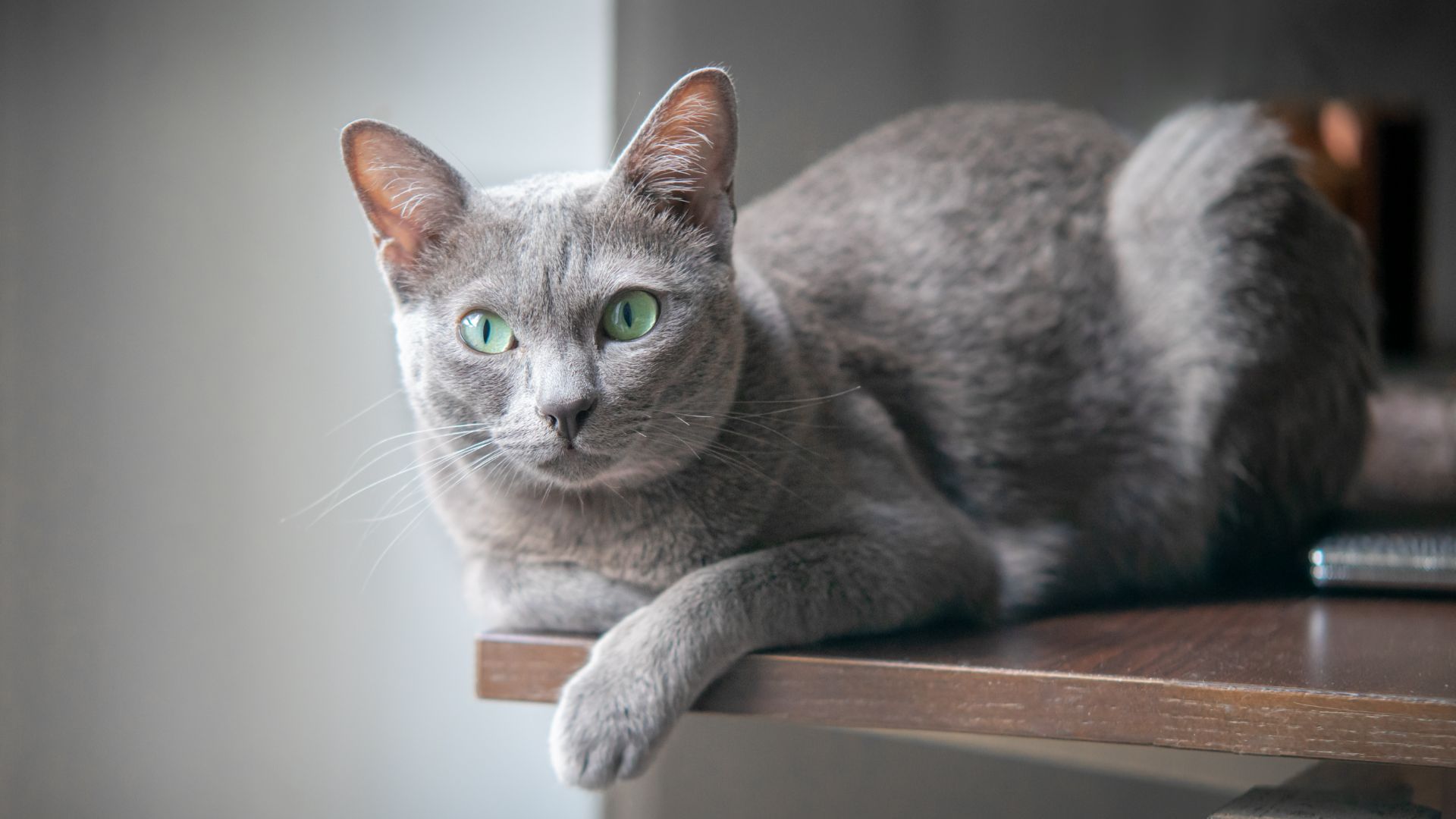
With a sleek, muscular body, distinctive blue coat, and round, green eyes, the korat hails from Thailand and is thought to be recorded as early as the 14th century.
The korat is generally given a clean bill of health and only requires one weekly groom, so why is it on this list? It’s yet another high-activity breed. These playful cats need toys and games to play with and, while they can be left for a few hours at a time, benefit hugely from regular human companionship. They have a persistent prey drive and will gain a lot from hunting games.
While they would love to roam freely in the great outdoors, such is their strong hunting instinct and willingness to make friends with potential thieves, they are better off just having access to a secure garden.
20. British Shorthair
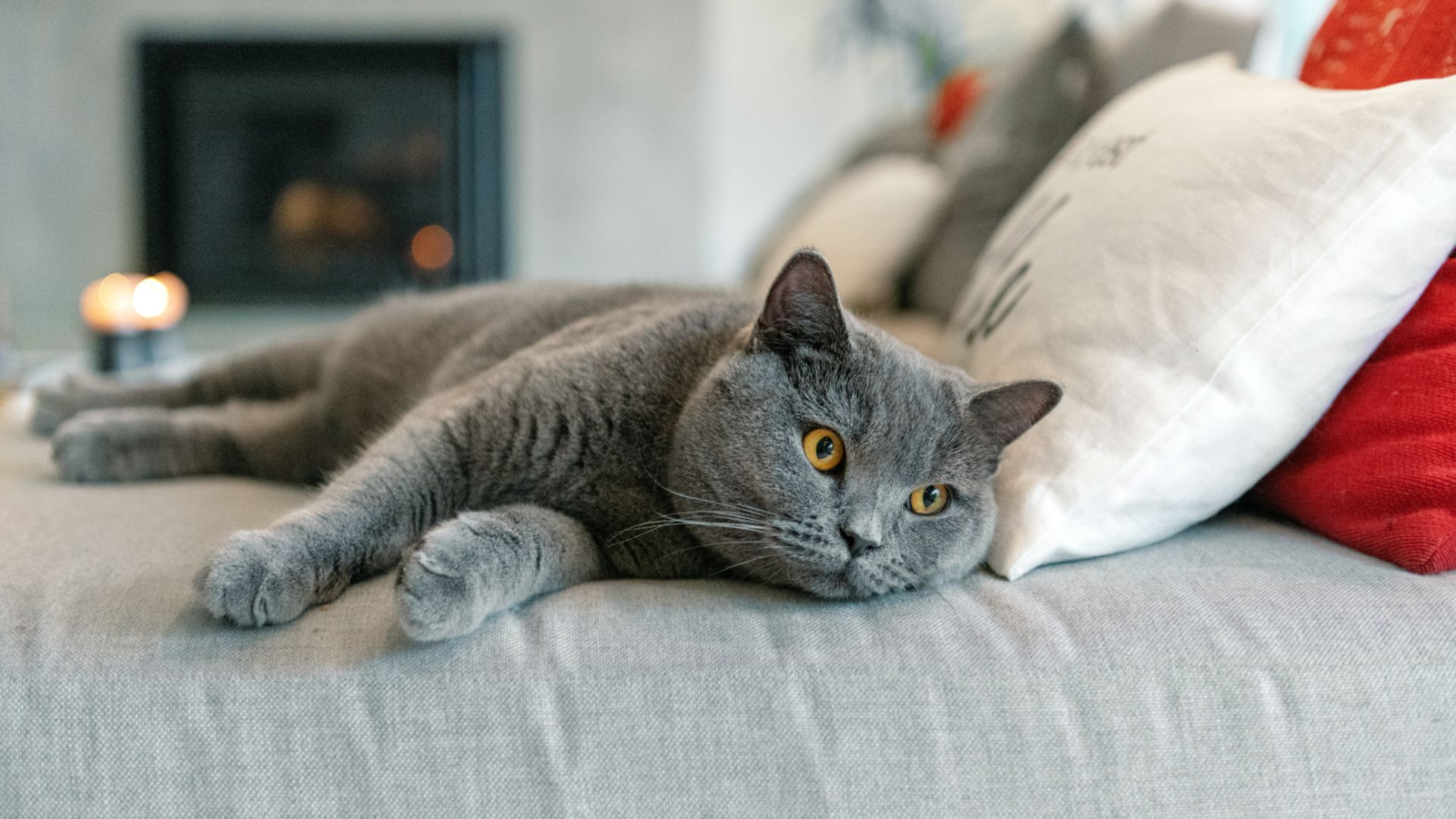
Despite its name, this instantly recognizable breed has links to ancient Rome, brought to Great Britain during the Roman invasion. Subsequently bred for its appealing features – a cute round face, stocky build, and trademark slate-blue fur – the British Shorthair is one of the oldest feline breeds ever recorded.
British Shorthairs are medium to large and are generally hardy, healthy, and bright. However, they can be prone to lymphoproliferative syndrome, a disease that affects the development of the organs and can cause them to become enlarged. Another health issue to look out for is obesity. These cats need to have a carefully managed diet and while they might look at you the way Oliver Twist looks at a bowl of porridge, they probably don't need an extra snack.
British shorthairs generally get on well with other household pets and become very closely bonded to their families. Playful and loyal, they love nothing more than spending time with their favorite humans. Unlike other breeds on this list, British short hairs are known to be a little more laid back than other cat breeds, and won't mind spending enough afternoon on the sofa with you.
21. Oriental shorthair
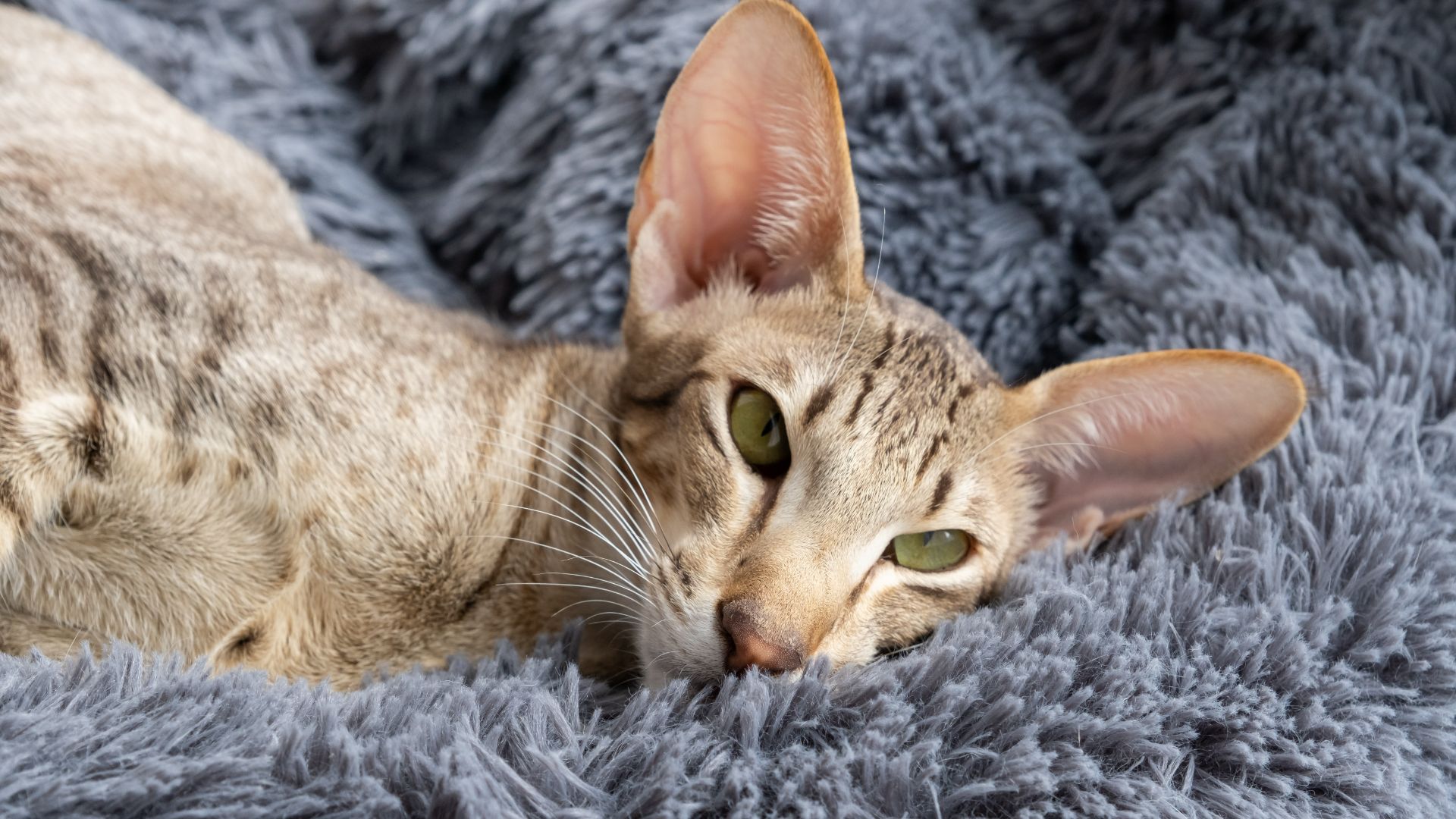
Some say oriental shorthairs aren't as destructive as their Siamese cousins – the breed was developed in the UK with Siamese cats as the foundation – but they are still highly inquisitive, very athletic, and very busy medium-sized cats. As well as personality traits, the oriental shorthair shares a lot of physical features with the Siamese, including a triangle-shaped head, a fit athletic build, and large, widely set ears.
As you might imagine, the oriental short hair would love to spend lots of time outdoors. However, these adventurous cats are simply too confident and curious to be safe in the outside world and would instead benefit from a cat-proof enclosure. They require much mental as well as physical stimulation and will benefit from puzzle games as well as play that simulates hunting.
Oriental short hairs have a short glossy coat that requires a weekly brushing. Healthwise, they are generally robust and well but should be checked for flat-chested kitten syndrome, a disease that stops the chest from forming correctly.
22. Abyssinian
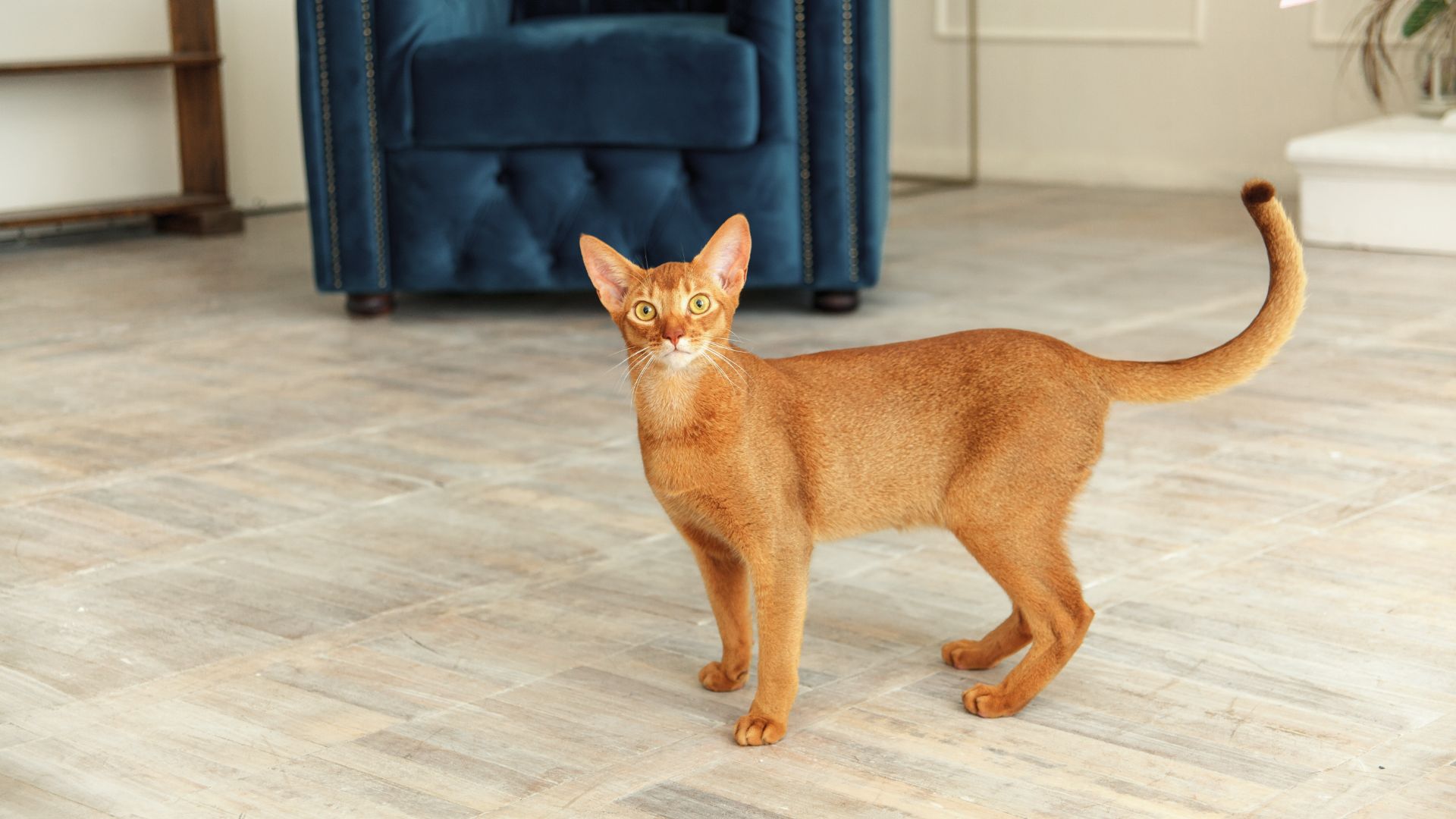
Abyssinian cats almost look like miniature pumas. They have a sandy coloring, an athletic build with an elegant head and prominent ears. Their moniker may be the antiquated name of the country of Egypt, but these wild-looking cats actually hail from Southeast Asia.
A robust and healthy cat, an Abyssinian won’t sit still for long. If you’re looking for a cat that wants to share a comfy chair with you all evening, you might be wise to continue your search. However, while they aren’t fond of relaxing, an Abyssinian will love getting involved with any household task, piece of work, or meal you’re involved in preparing. Essentially, these cats have serious FOMO.
A spacious home with plenty of toys, cat gyms, and cat trees would be perfect for an Abyssinian. Like many short-haired cats, the Abyssinian only requires a weekly once-over with a grooming brush.
23. Birman
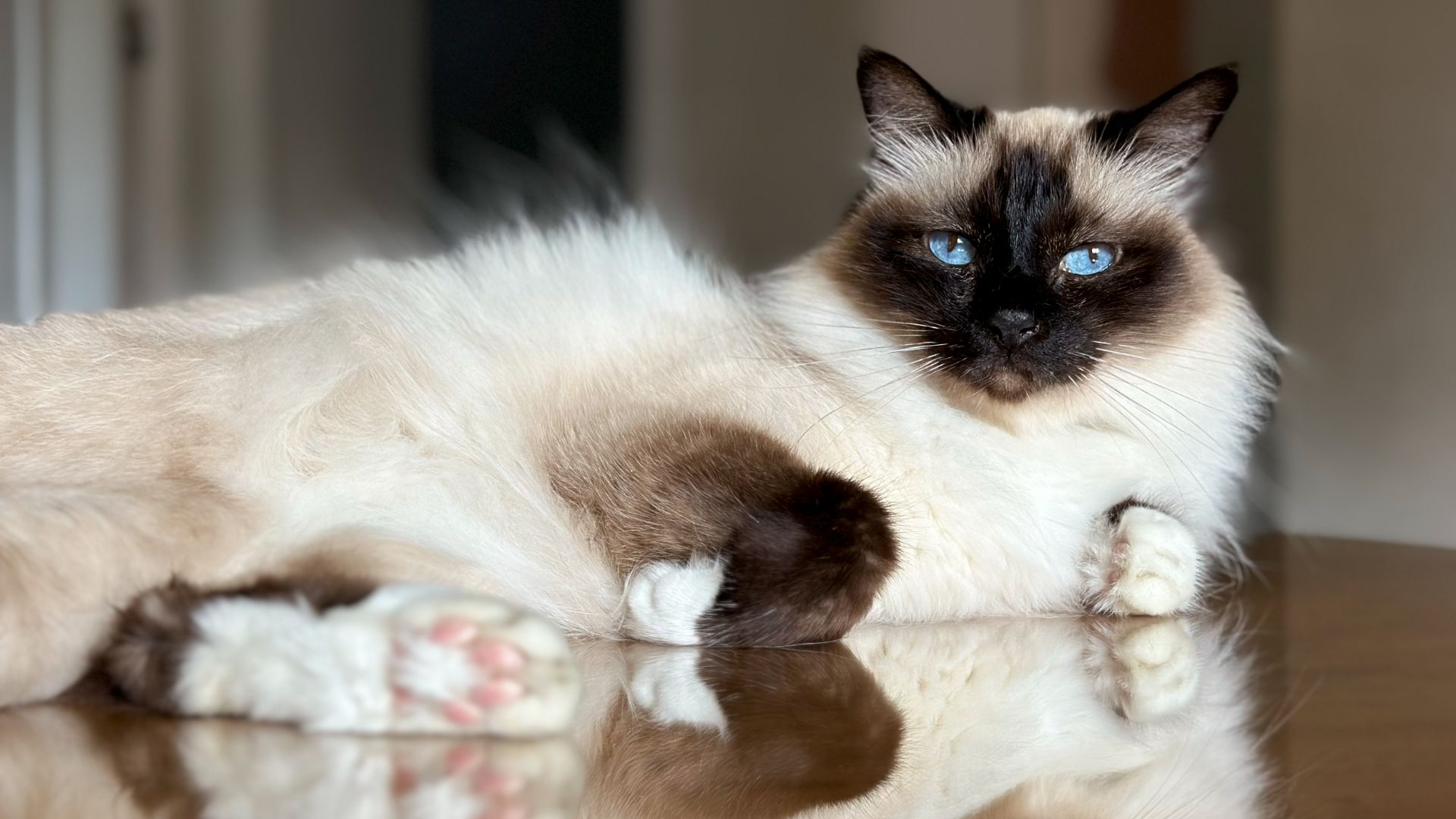
The first record of a birman cat came from France, and the breed is steeped in myth and legend. Some say birmans began as temple cats, rewarded for their devotion to their priest by a goddess who gave them their signature blue eyes, creamy fluffy coat, white ‘trainer socks’, and brown stockings.
The birman is a supremely beautiful cat. With dazzling eyes and plush coats, they take on an almost cartoonish look. While not as intensely fluffy as the Persian, birmans still require thorough grooming several times per week to prevent matting and keep the coat soft.
Generally, birmans are in good health. This laid-back, friendly, and affectionate feline thrives on attention and play, so needs an owner who will dedicate themself to this.
24. Japanese Bobail
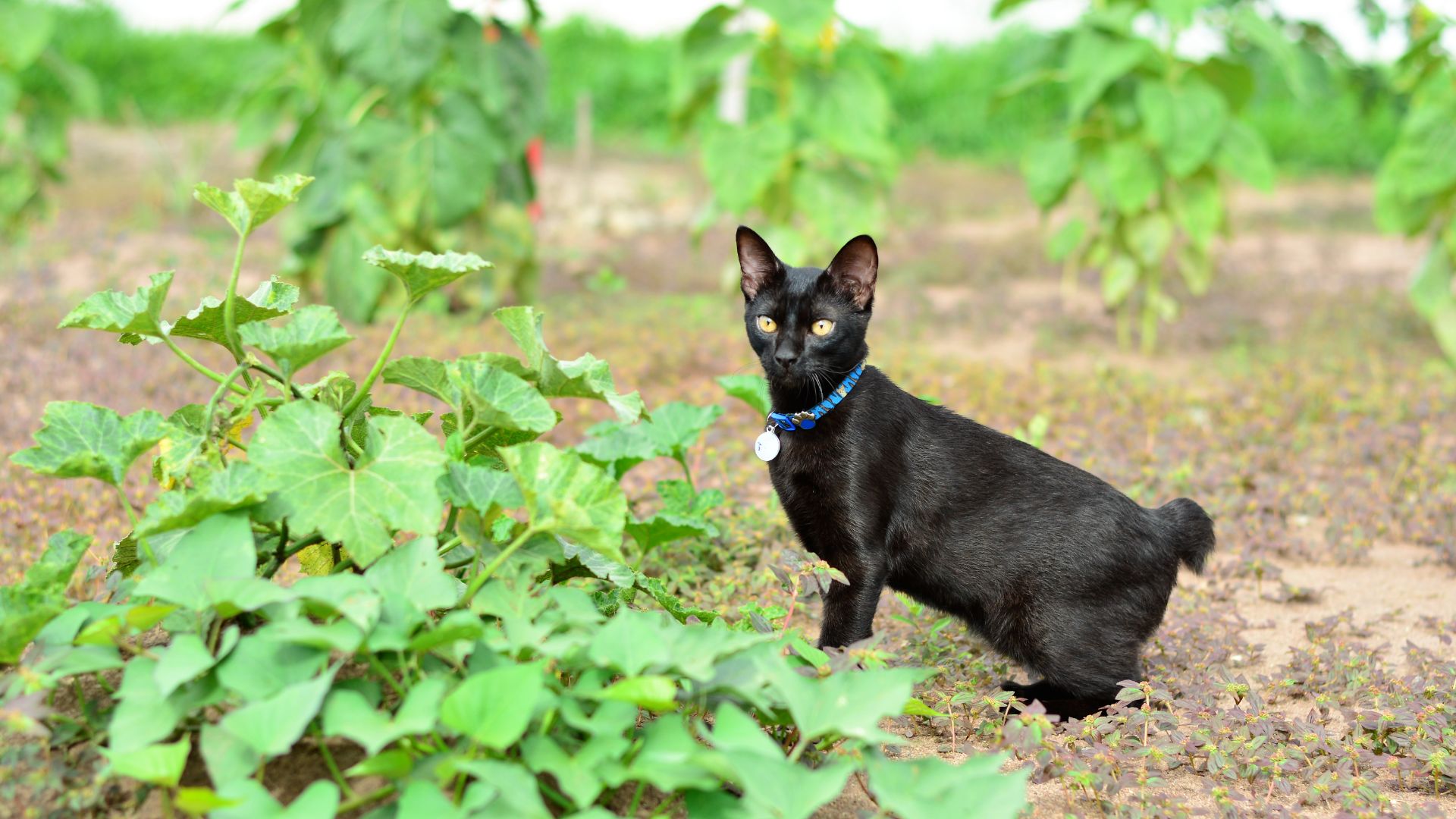
Distinctive for their short, curled tails, Japanese Bobtails have a shapely head, pointed ears, large eyes, and a curious expression. They can be traced as far back as eighth-century Japan. Said to be lucky, they can frequently be seen in Japanese art spanning the centuries.
These inquisitive cats do come with a couple of health warnings. Some tailless cats are so because of a genetic mutation, but it is reported that Japanese Bobtails’ get their shortened tails due to spinal deformities, which should be monitored closely as it can predispose them to injury.
25. Pixiebob
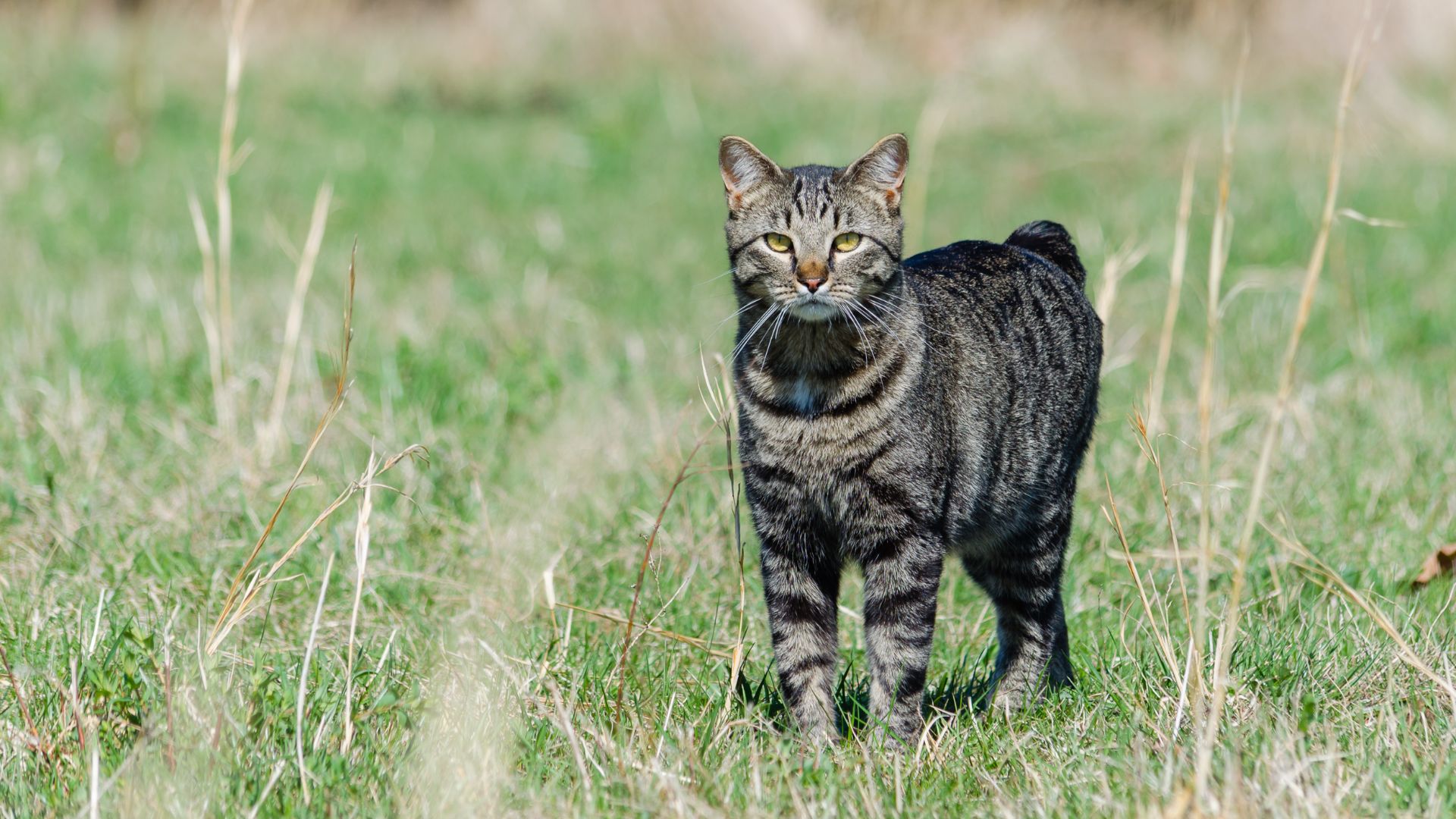
This stocky, sturdy kitty looks just like a North American bobcat. With pointed ears, a round face with a chunky snout, black ‘eyeliner’, and a striped fur pattern, they are most recognizable for their very short – and sometimes non-existent – tail. The pixiebob is polydactyl, meaning they have extra toes on their front or hind feet. The problem with these toes is that they sometimes aren’t connected to the foot properly or don’t function correctly, and require veterinary attention or removal.
A pixiebob would soon become your best friend – they are highly sociable and dependent kitties. They are extremely playful, with an urge to climb and jump – their inquisitive nature means that they will be interested in everything you’re up to. You might want to redirect their attention away from your furniture and onto a cat tree or scratching post!
If you are time affluent enough for the pixibob’s play and attention requirements, you’ll be pleased to know that the shorthaired variety requires just a weekly groom. However, a long-haired pixie bob will need a few more sessions per week, which you’ll need to make time for.
26. Savannah
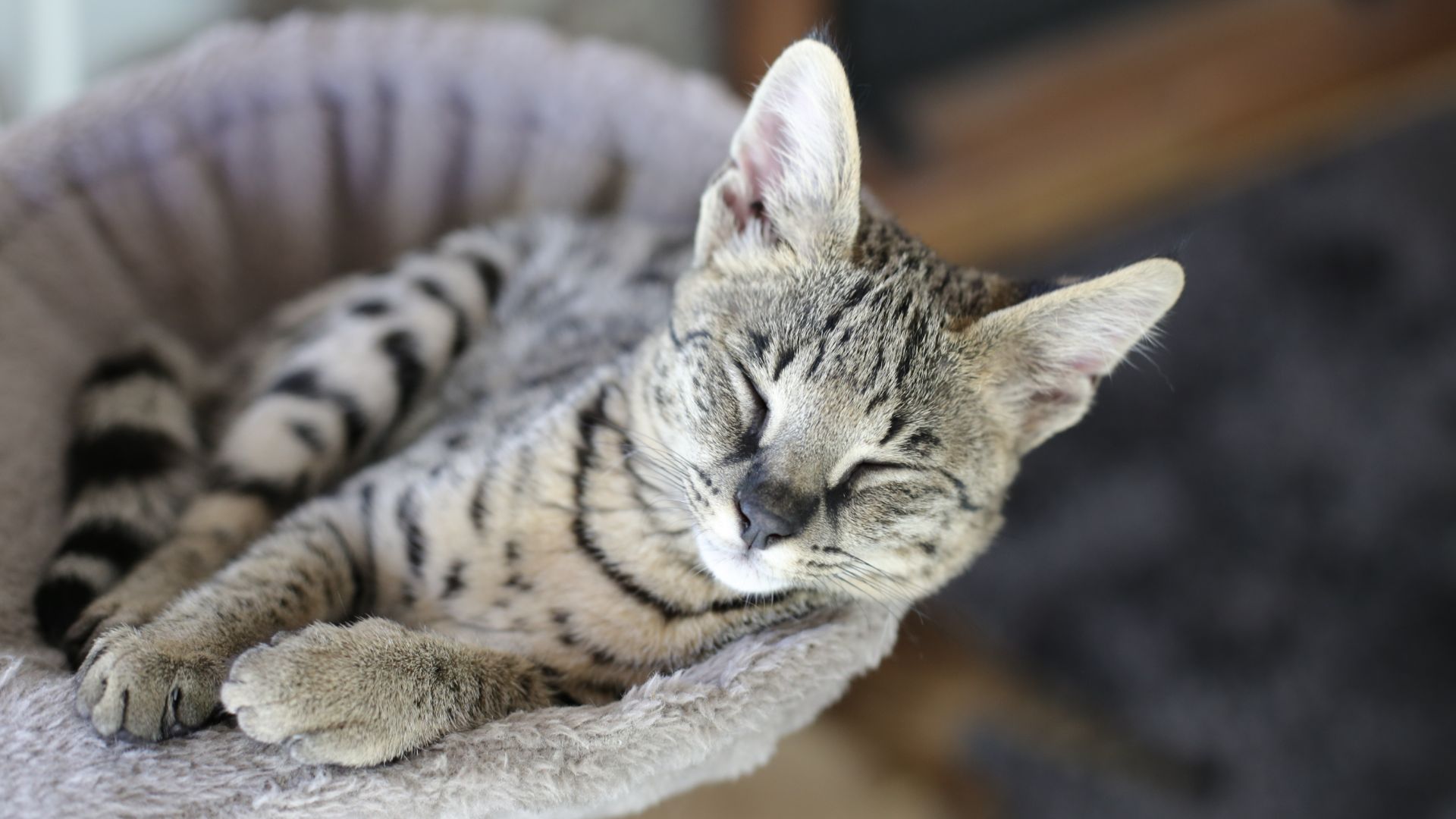
Boldly-patterned savannah cats are as striking as they are elegant. The breed inception took place in the 1980s when an African wild cat breed called a serval was crossed with a domestic cat. Crosses can be between a number of different permitted shorthair domestic breeds, though some breeders cross with Bengals and Maine Coons for a longer coat.
The Savannah is a tall and lean cat with intelligent eyes and a wild appearance. In some states, it is illegal to own a savannah cat, or you may require a permit to own one.
While Savannahs need minimal grooming, they are high-input cats in almost every other way. Your savannah will need ample space to play, with a lot of time and effort dedicated to their entertainment and exercise. Their semi-wild status means they have a high prey drive, so smaller furry pets won’t be safe! It’s also not advisable to give them unrestricted access to the outdoors – but some may tolerate a cat harness.
You’ll need a lot of climbing apparatus, numerous platforms, and lots of food-dispensing and puzzle toys to keep them stimulated. It’s not advisable to leave a savannah unattended unless you can guarantee your home is reliably cat-proofed.
27. Manx
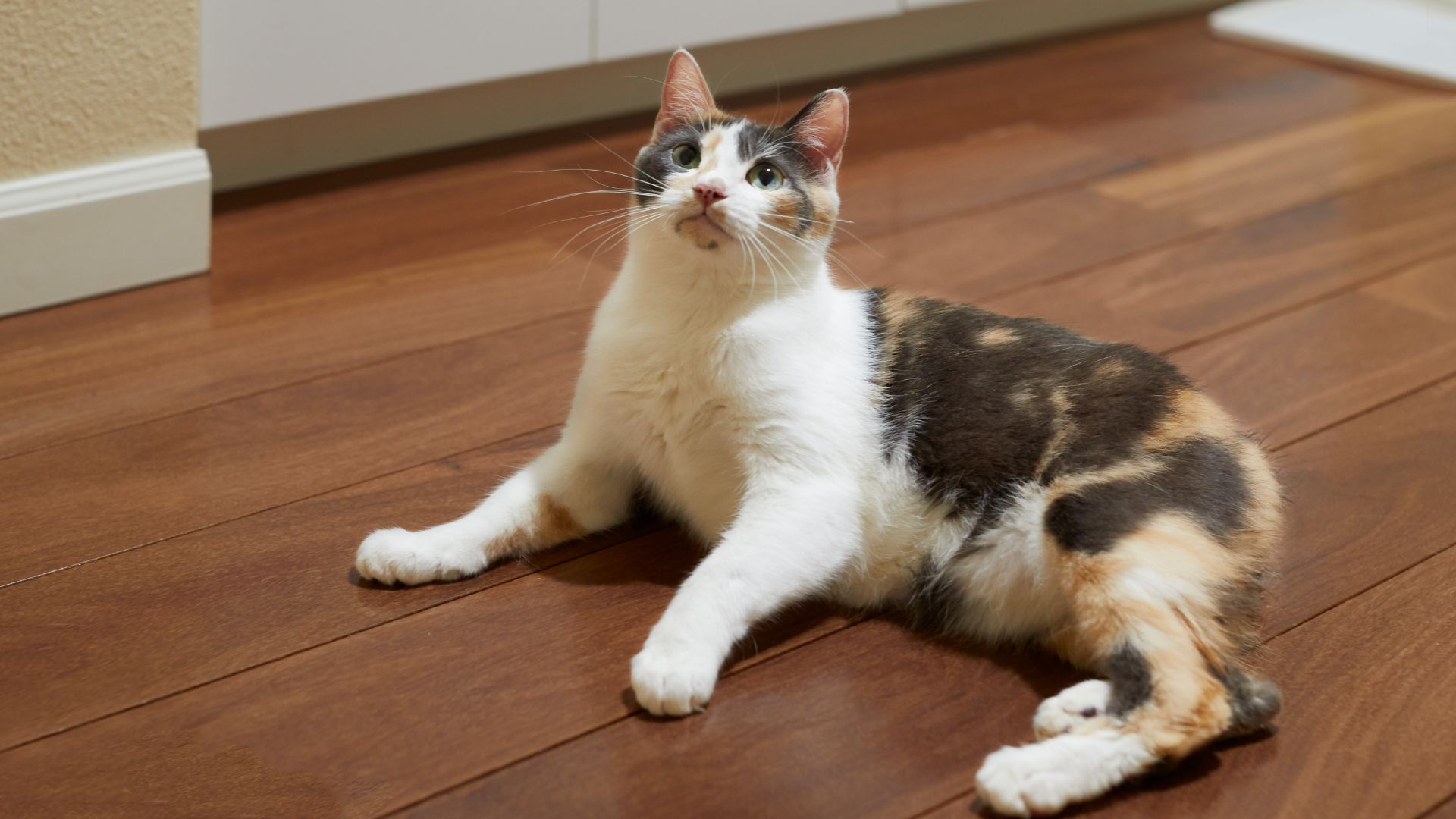
This small, often tailless kitty might look innocent and chilled-out at first, but they sure do have an active streak! Manx can be any combination of colors and feature a sweet, round head, expressive eyes, and short, stocky legs. They are short-coupled and while most iconically known to lack a tail (known as a rumpy), some do have a very short one (known as a stumpy!).
The manx’s history is traced to the Isle of Man, a territory located in the Irish Sea between Great Britain and Ireland. A myth surrounding the manx is that its tailless appearance is owing to Noah slamming said tail in the ark’s door!
A little suspicious of strangers, the manx is anything but reserved with their own family. They thrive on play and hunting games in particular. They are active and will need provisions for jumping and climbing. While loving and affectionate with their people, manx don’t thrive in a busy home with endless visitors in and out or owners who travel a lot.
Manx maintain their coats well and will only require a brush over once per week. However, the breed can be predisposed to arthritis and issues with the bowel owing to the spinal defect that causes the tailless appearance. As such, manx are likely to require special management.
28. Cymric
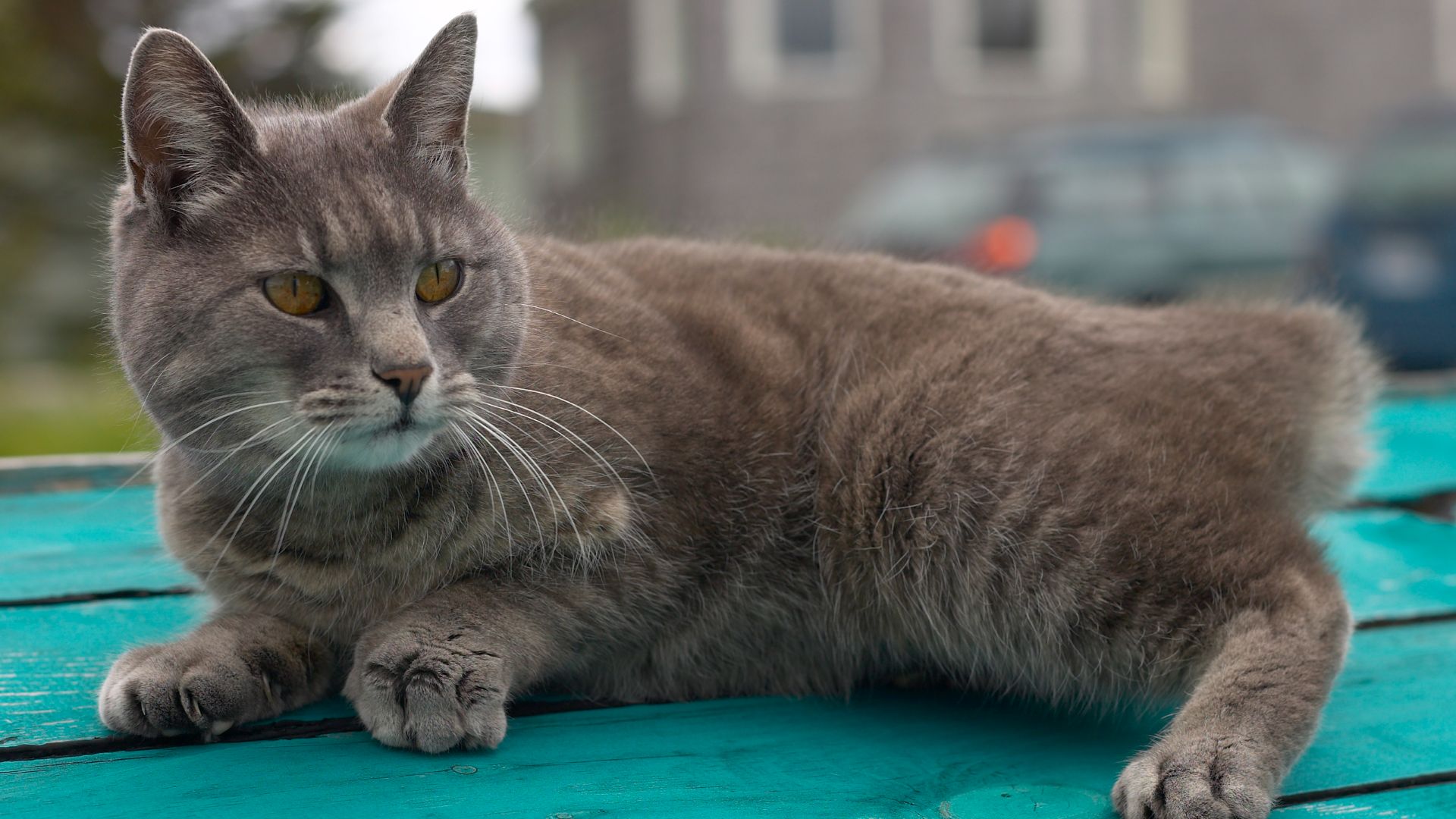
Another tailless breed, the cymric has similar health concerns and potential additional care needs as the manx, from which the breed is derived. They are similarly small and compact cats, have a tailless and short-tailed variety, and are often considered to be a sub-type of the manx rather than a breed in their own right. Their main distinguishing feature is their thick, full, and mid-length coat, which will require daily brushing.
Interestingly, cyrmics seem to be more gregarious than their manx cousins and are more able to cope with hustle and bustle as well as meet new people. They like to play, but may need a little more encouragement than a manx to get off the sofa!
29. American Wirehair
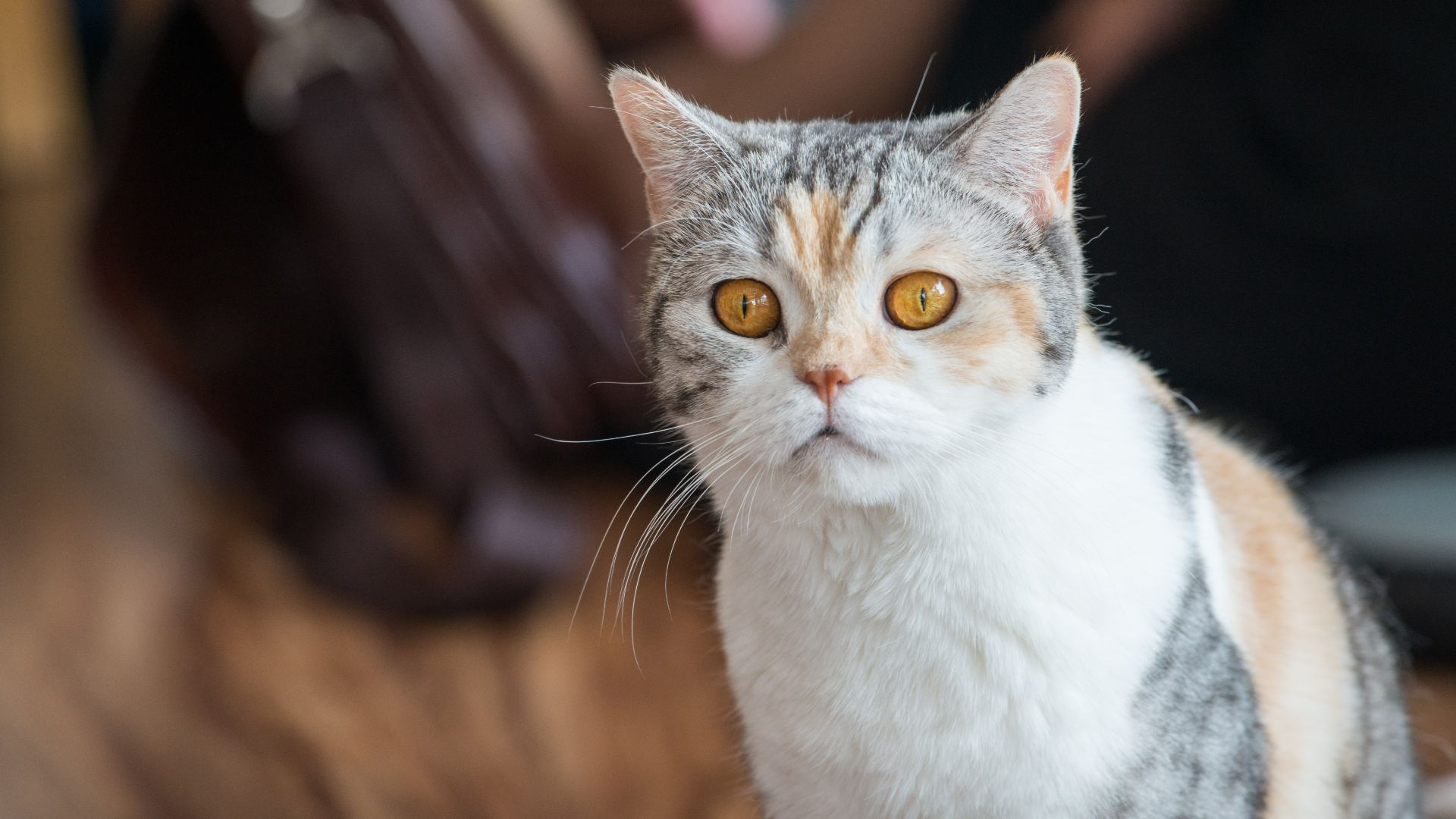
The American Wirehair’s origins lie in 1960s upstate New York, where a genetic mutation in a farm kitten resulted in the breed’s trademark thick, hard-textured hair. The wiry texture makes the fur more fragile than a normal coat, so the American Shorthair only requires minimal brushing.
The breed is generally healthy and is of a slightly chunkier build, with round paws, a short snout, and bright, inquisitive eyes. They are laid back and love a cuddle – reclining on the sofa is their favorite activity. However, this means they aren’t as inclined to exercise themselves as some breeds, so you will need to motivate them to get active so that they keep fit and weight-related issues don’t creep in.
30. Bombay

Black, sleek, and shiny, the Bombay cat is regal-looking and very striking. A medium-sized cat, the Bombay cat hails from Kentucky. With the nickname ‘parlor panther’, bombays are muscular and strong just like their wild lookalikes. Their greeny-gold eyes stand out against their glossy, jet-black coat and they have pleasant, rounded features.
Bombays are outgoing and are inclined to get along with the whole family – other pets included. They have minimal grooming requirements and generally have robust health. However, you’ll soon discover their cheeky side – Bombays make their own fun if they get bored! Keep them entertained with food dispensers and interactive games, and your Bombay will stay out of trouble. They’re highly intelligent, so why not try clicker training or teaching them tricks?
31. Chausie
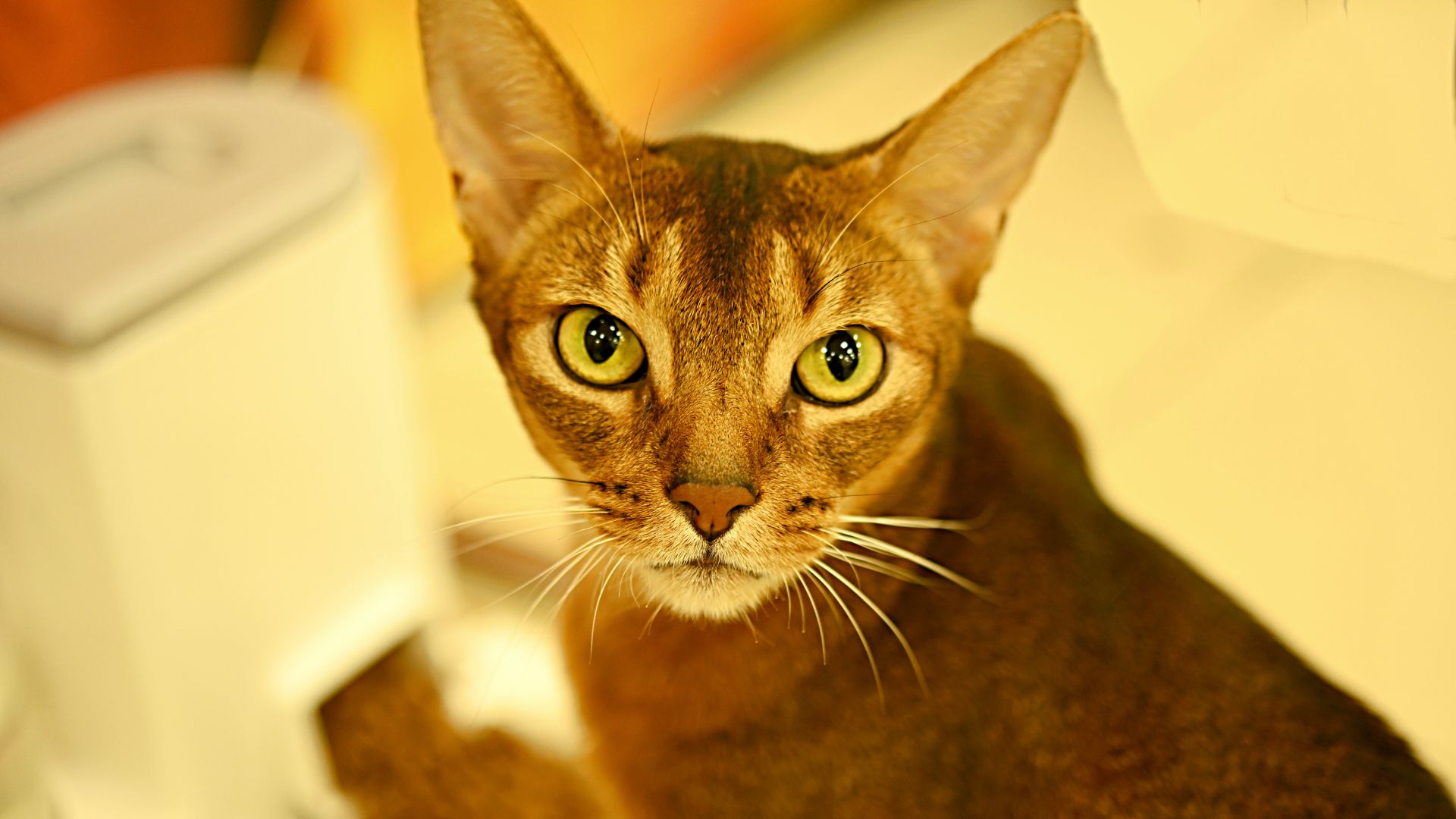
Although not formalized until the 1990s, the chausie is thought to have been around in some form for centuries, if not thousands of years. The name is derived from the scientific label for jungle cat, Felis Chaus, and like the savannah cat, the chausie is a wild/domestic hybrid. Indeed, the chausie is illegal to own in some states and cities, or you may need a permit.
The chausie has a cougar-like appearance, with a lean, athletic build and angular, noble features. While usually in good health, the chausie’s need for exercise, play, and mental stimulation makes them a high-maintenance cat breed. They need plenty of toys and climbing opportunities and shouldn’t ever be unsupervised. They are generally friendly but like their space too – their unpredictability makes them unsuitable for families. Free access outdoors should never be allowed!
They don’t need much grooming and are generally in good health, but these are their only easy care points!
32. Rescue
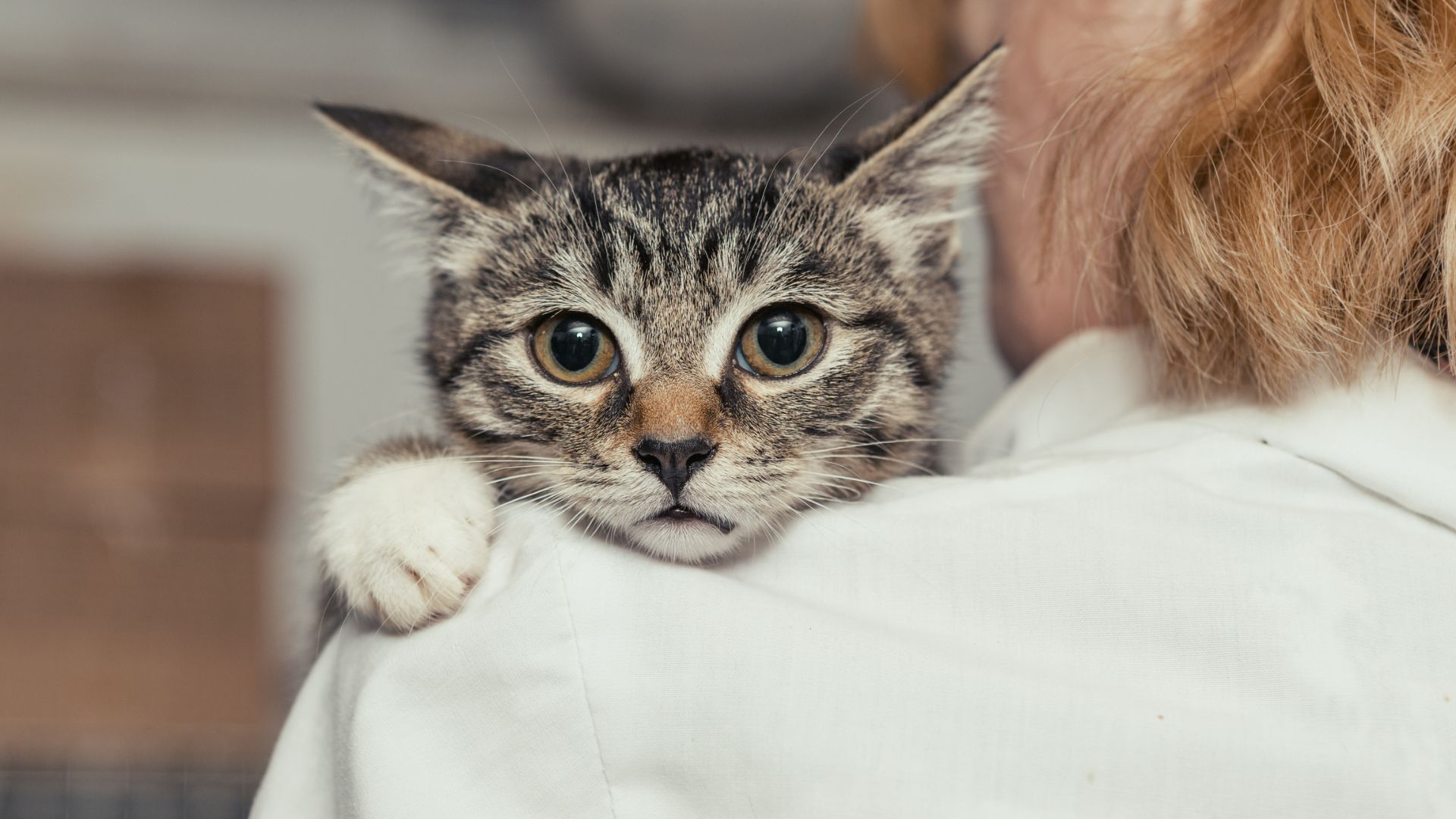
Ok, not strictly a breed, but taking on a rescue cat can mean anything from a healthy cat whose owner handed them over to a sanctuary to one who is being rehabilitated from a life of neglect or abuse. All kitties deserve a hands-on, caring owner and a loving home – some require that extra level of TLC.







